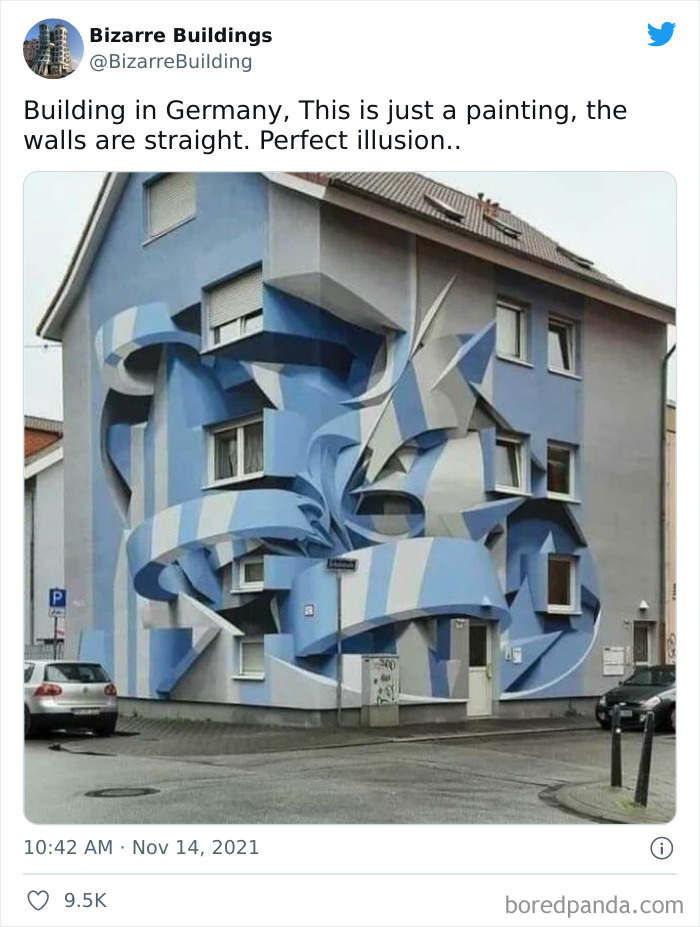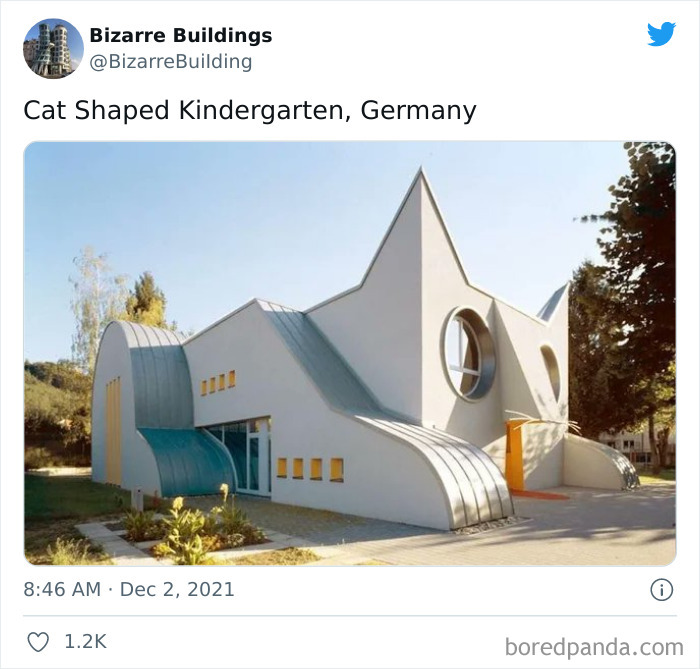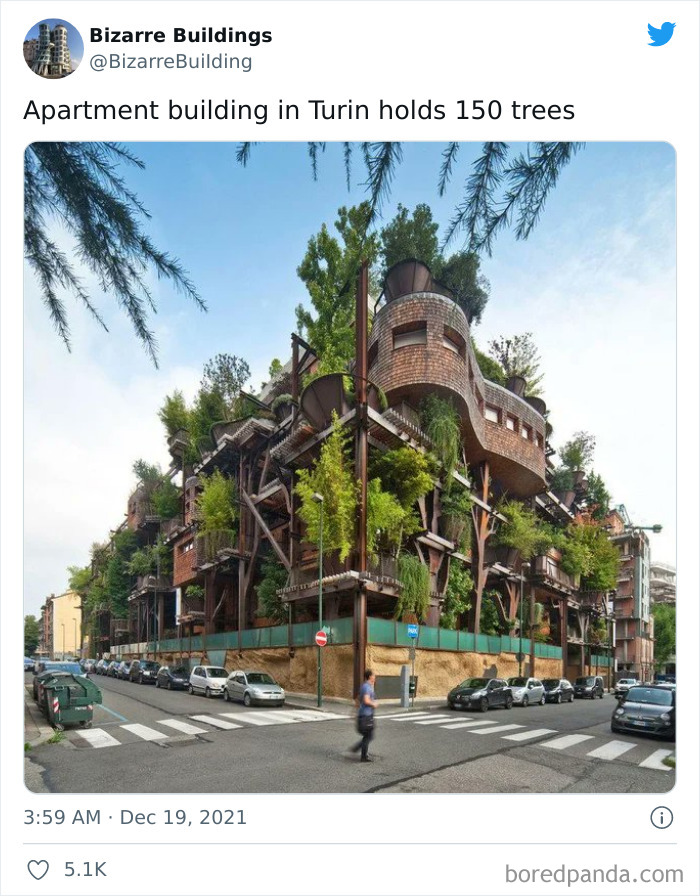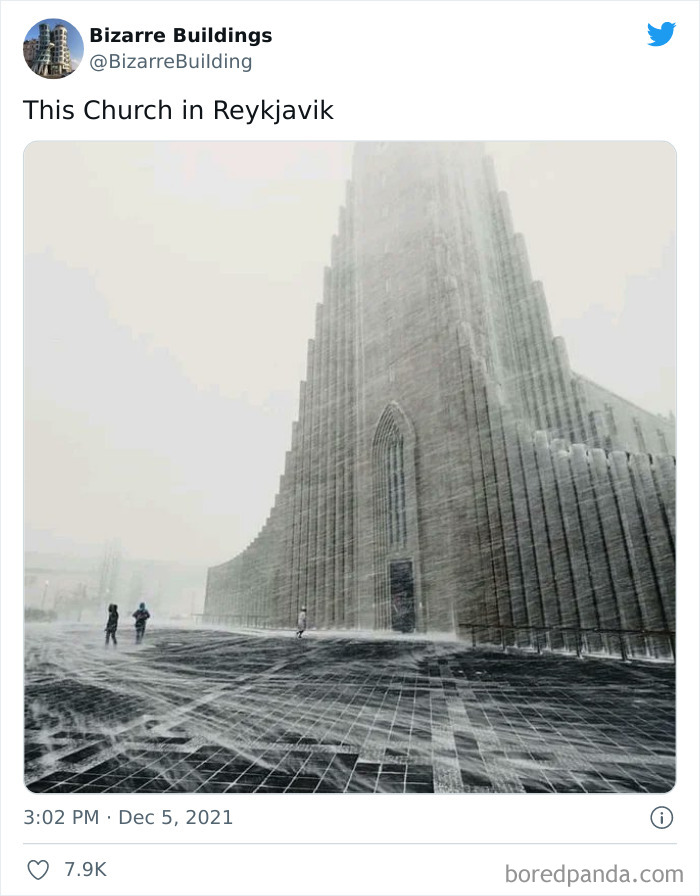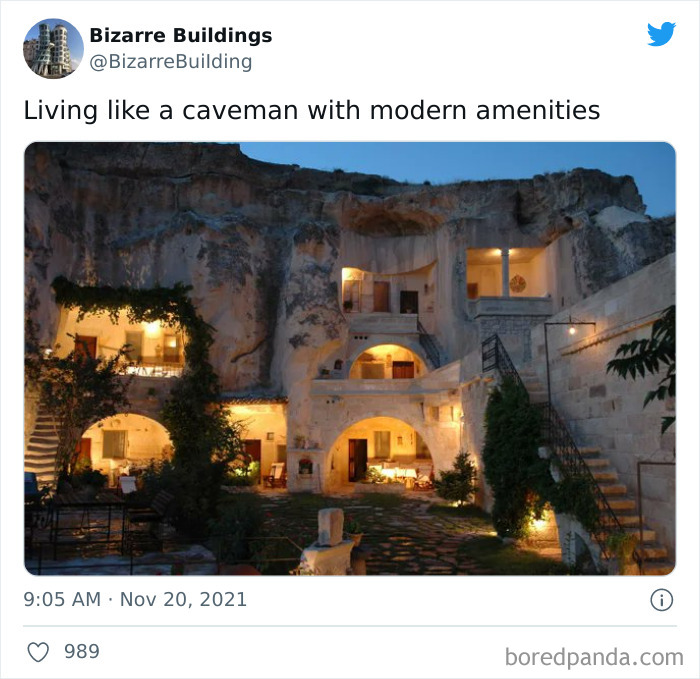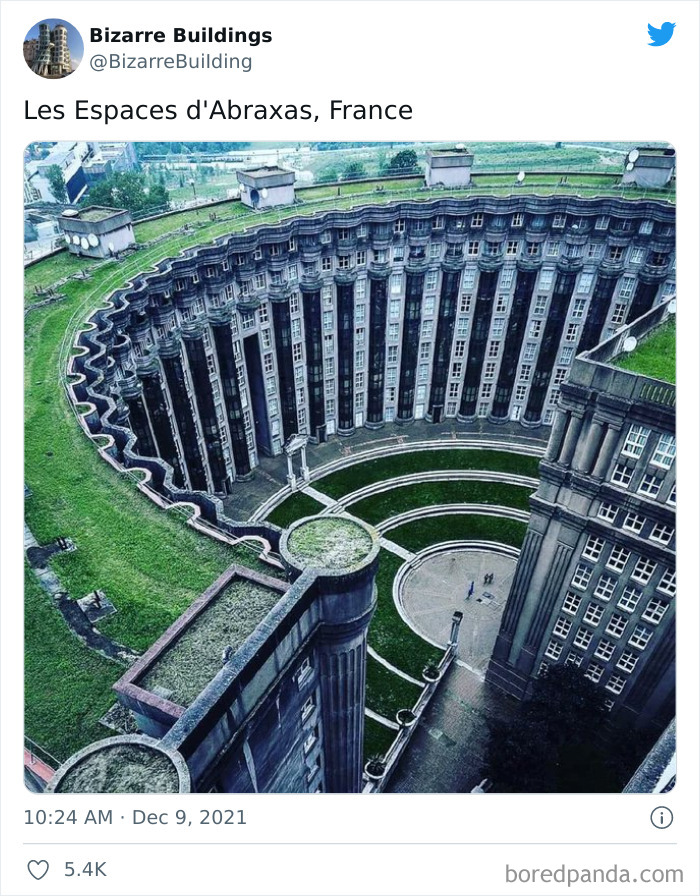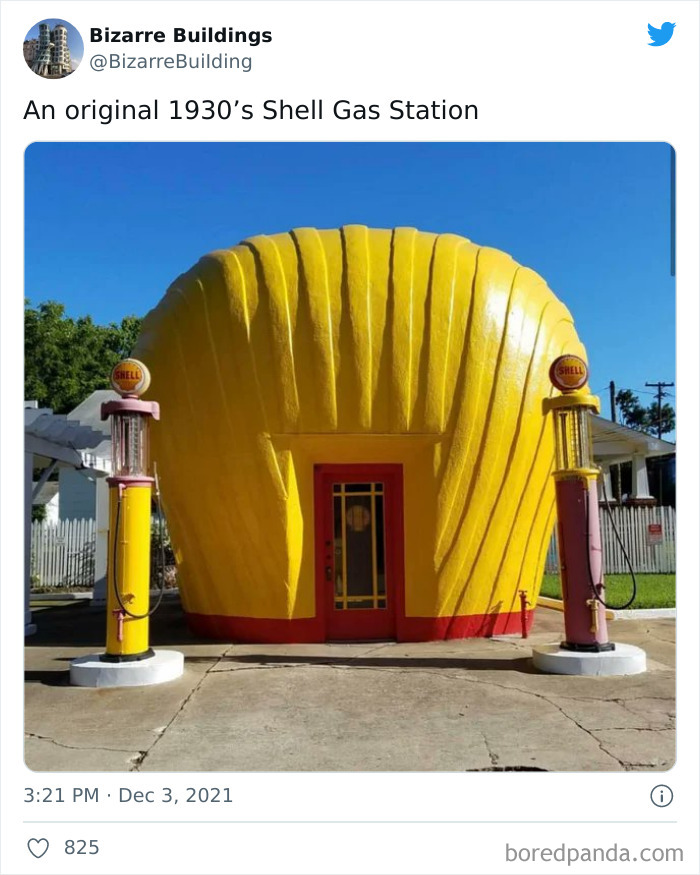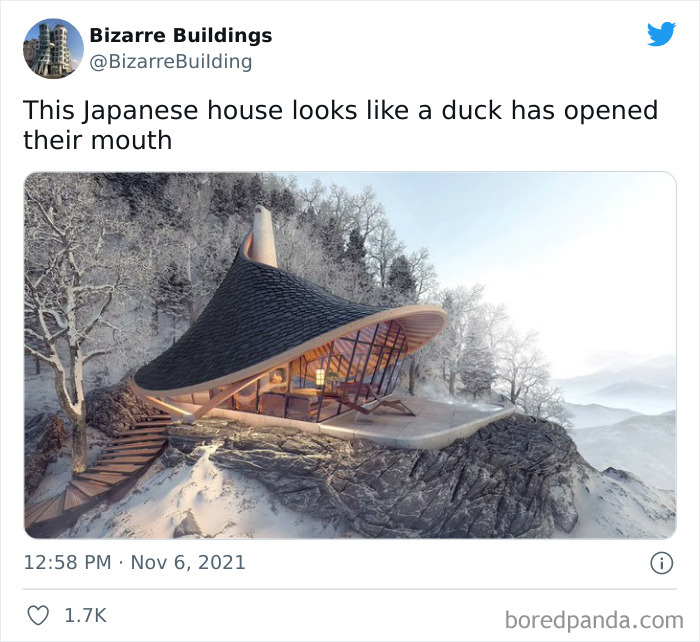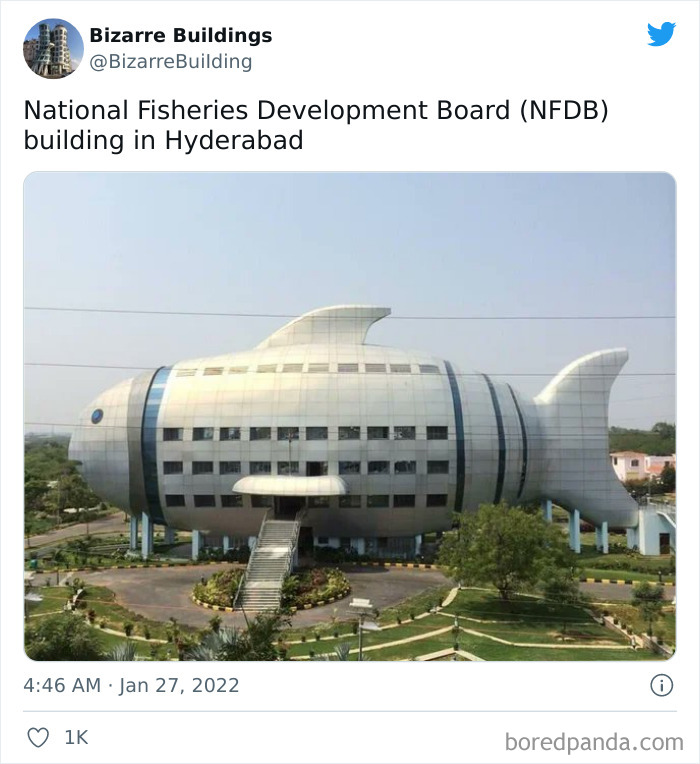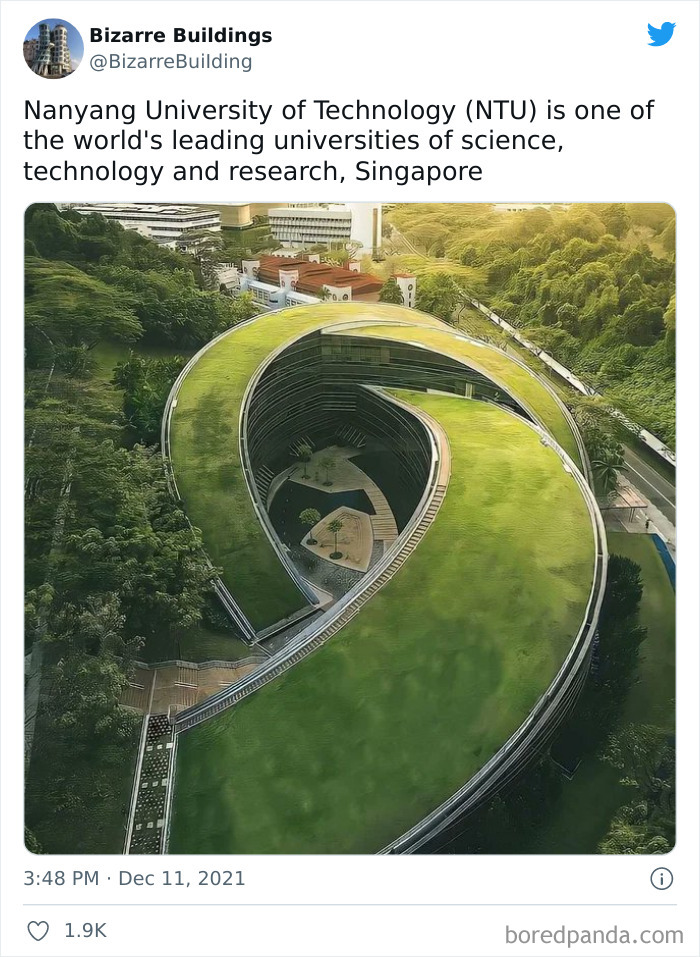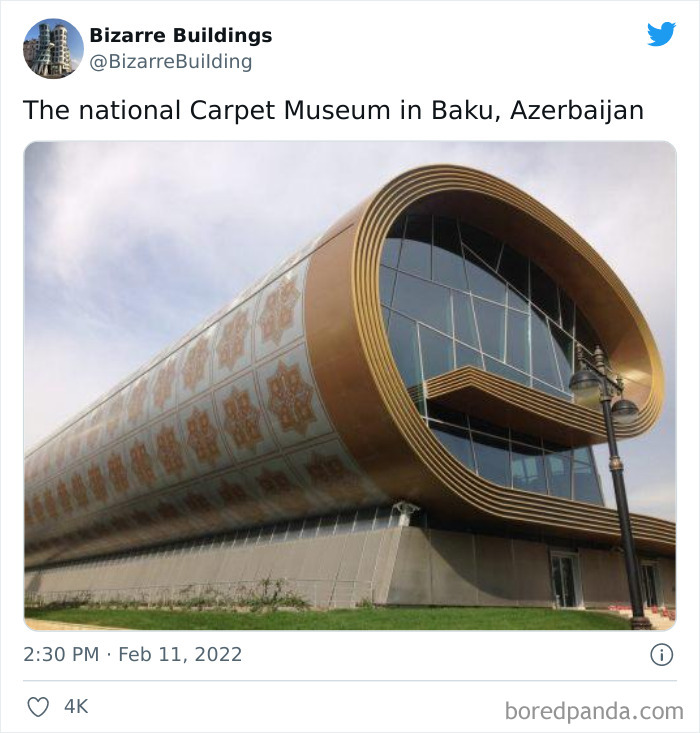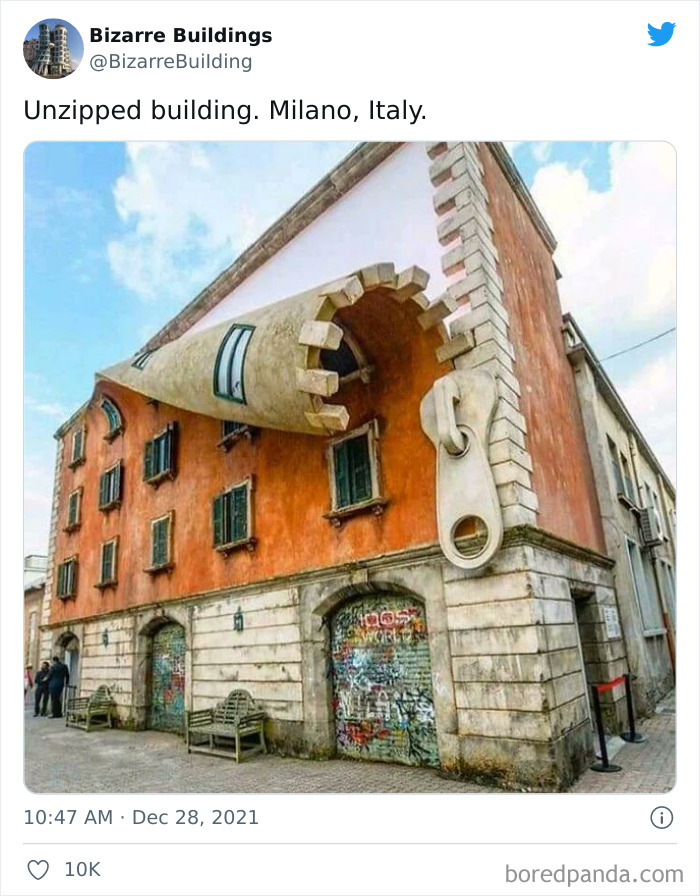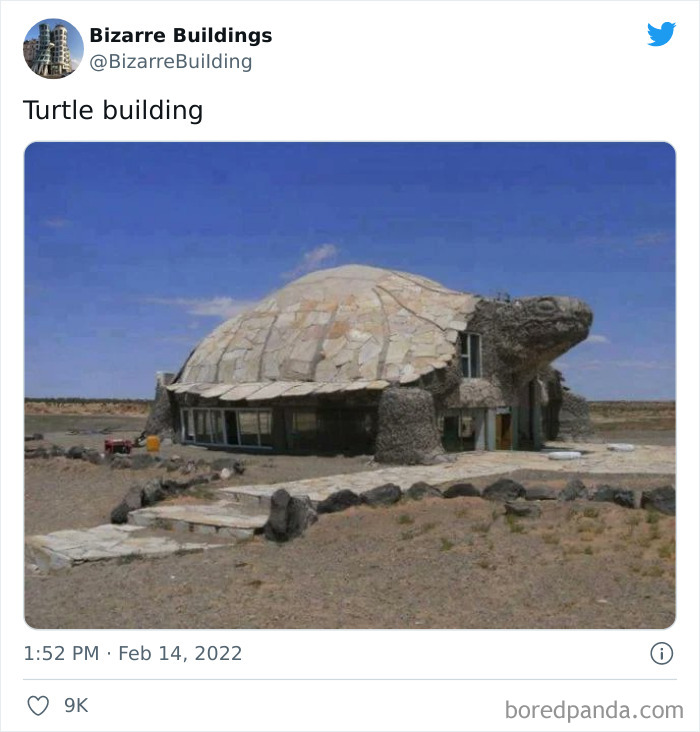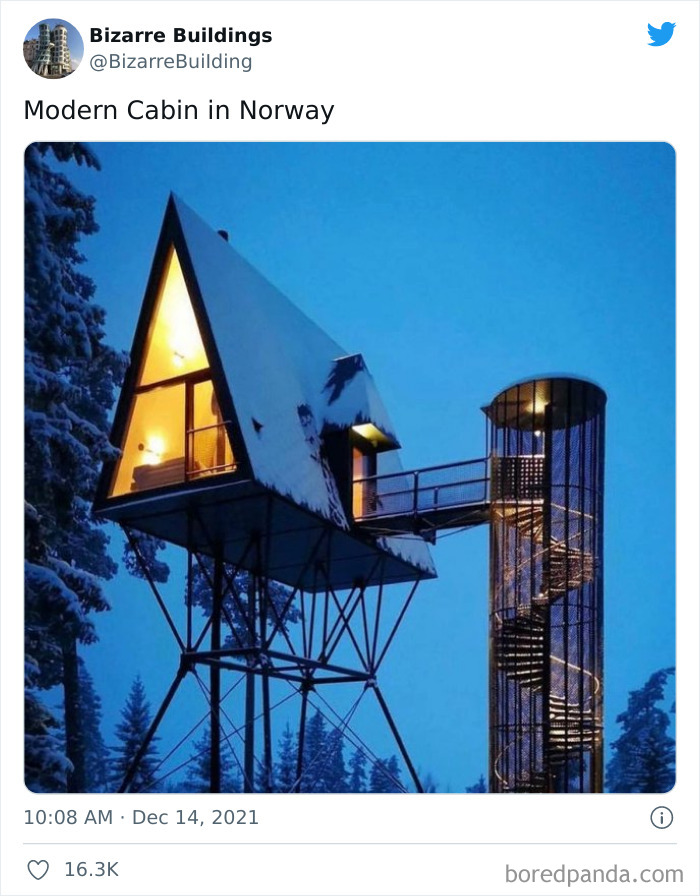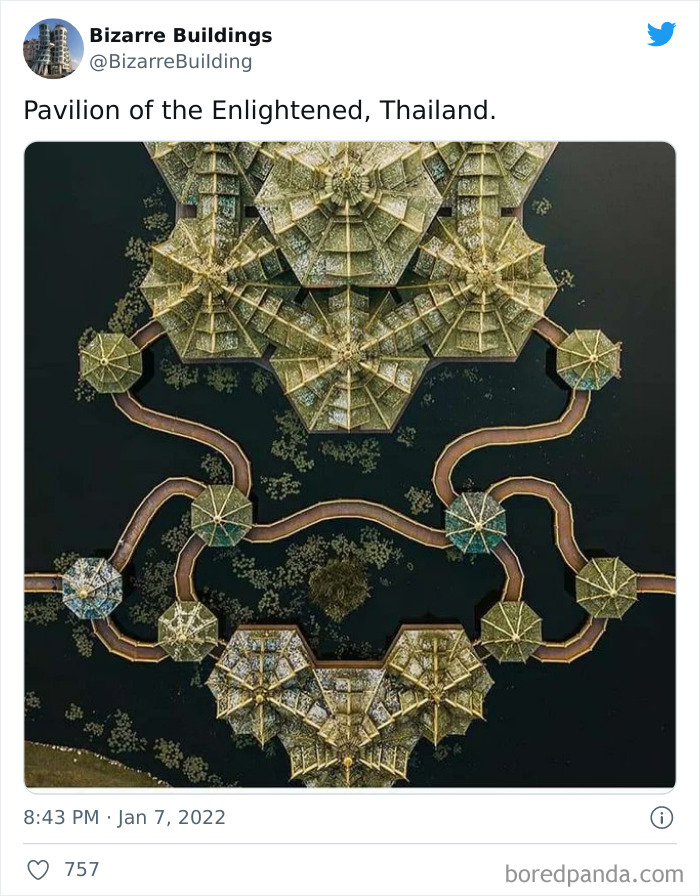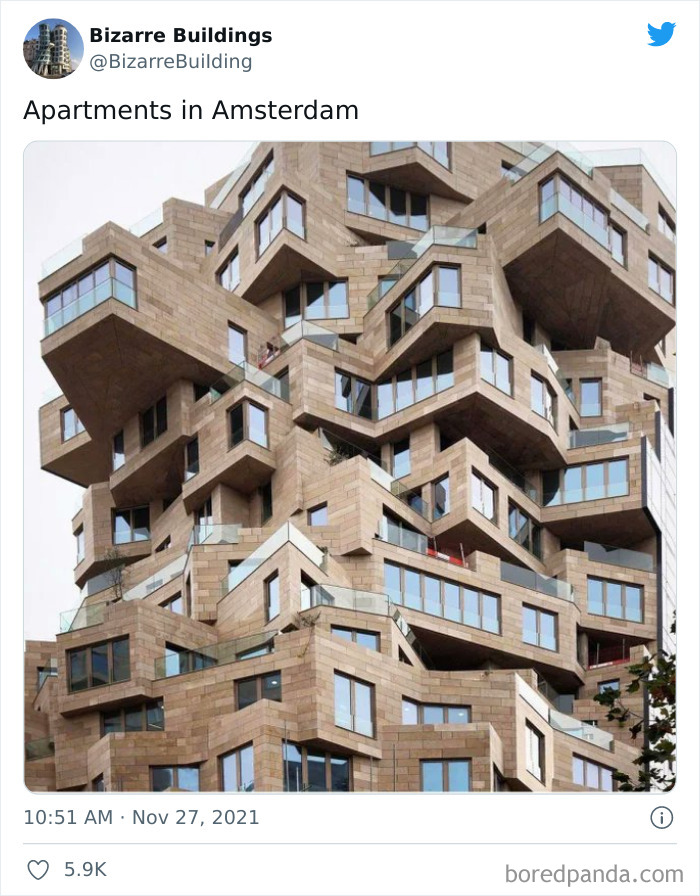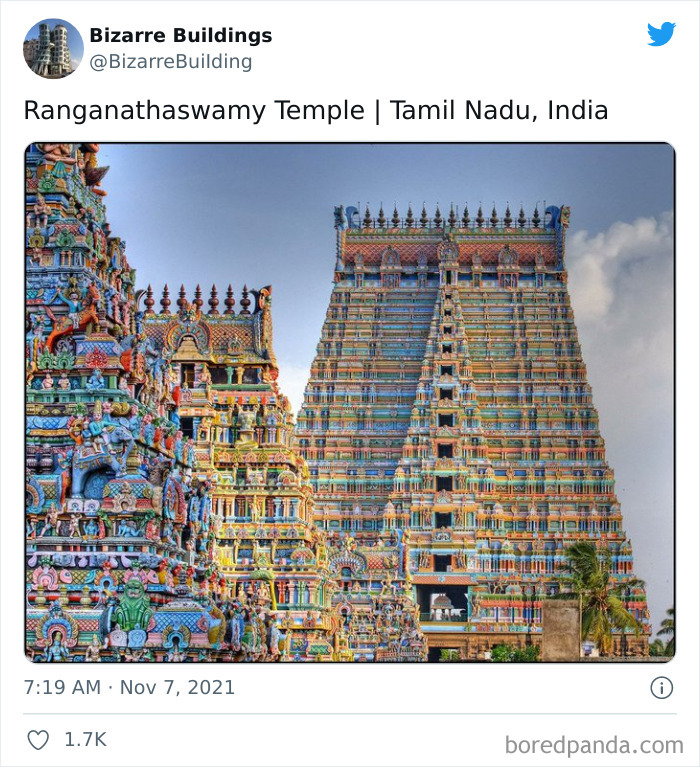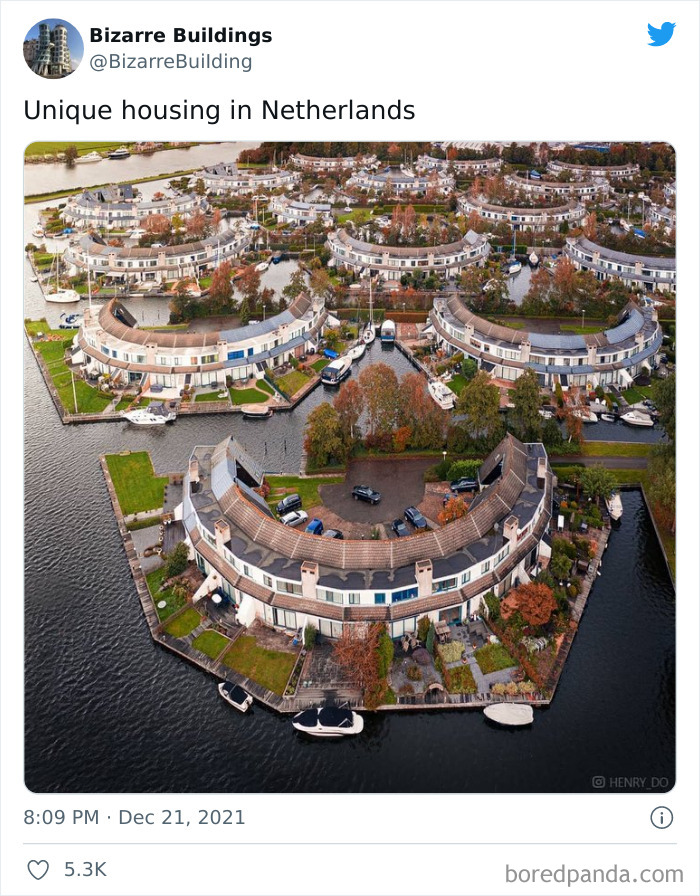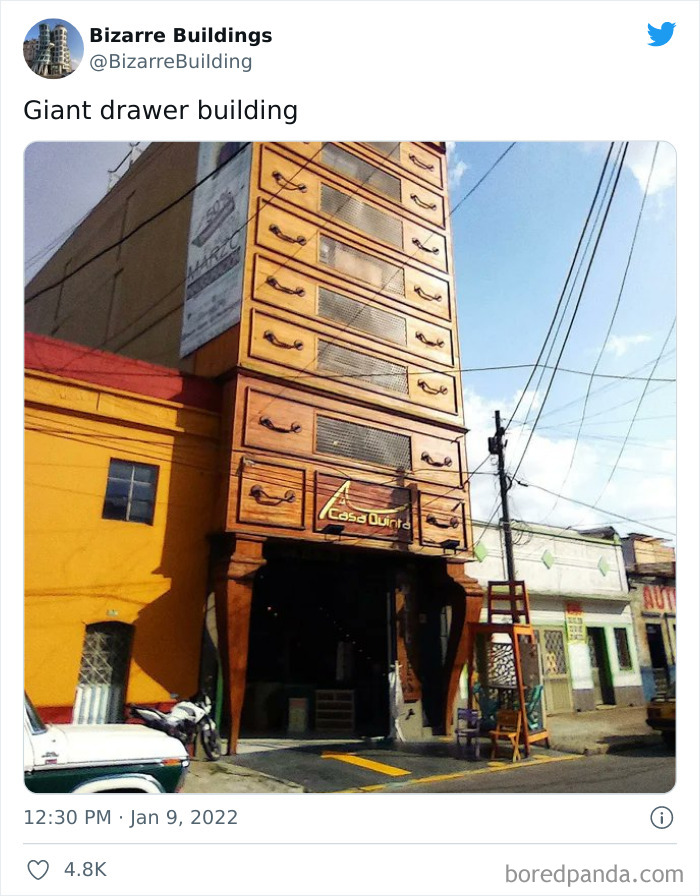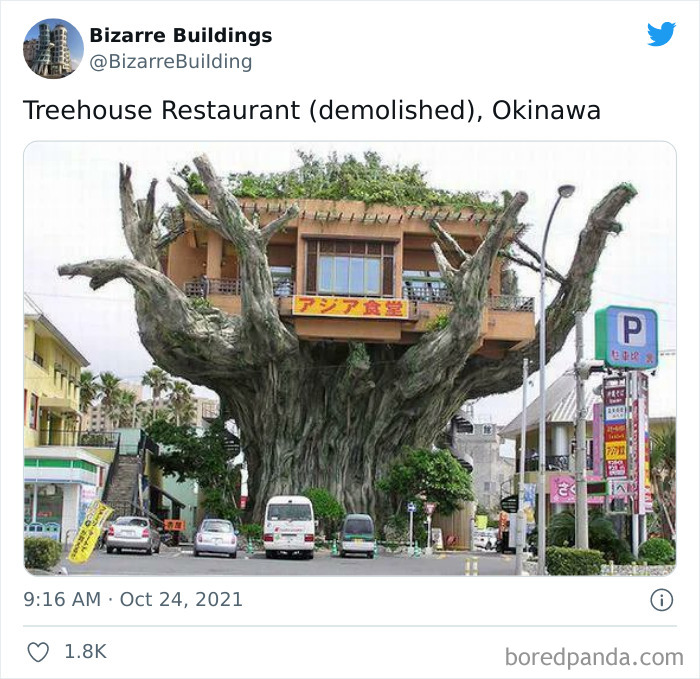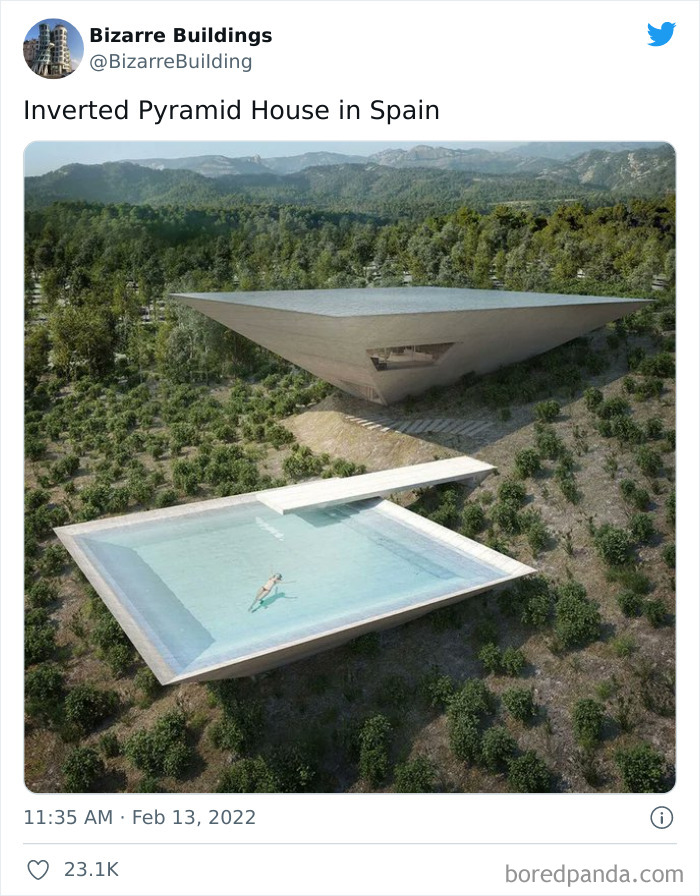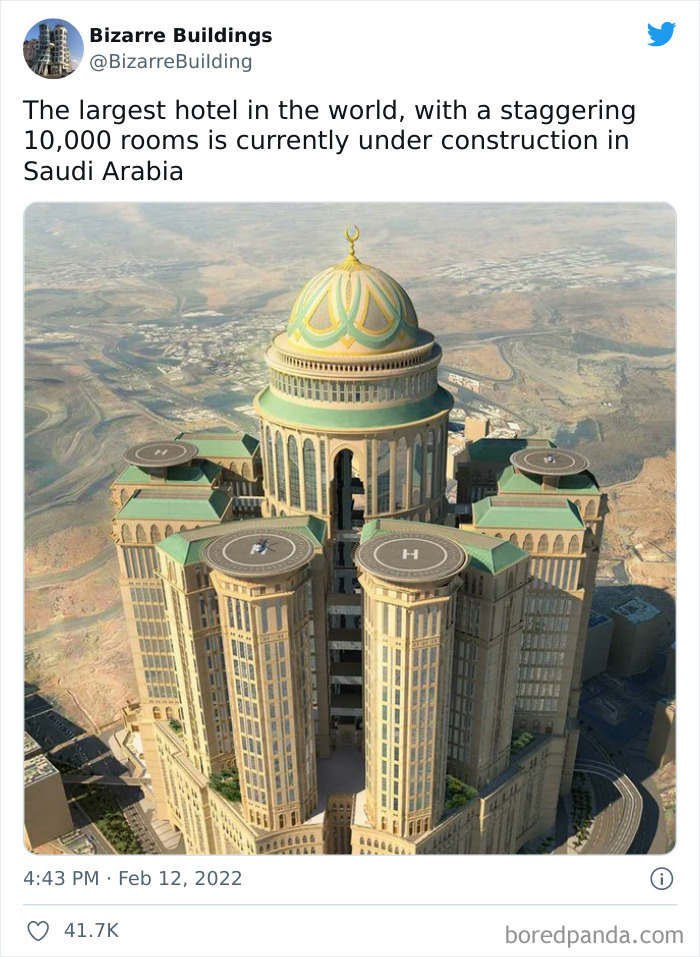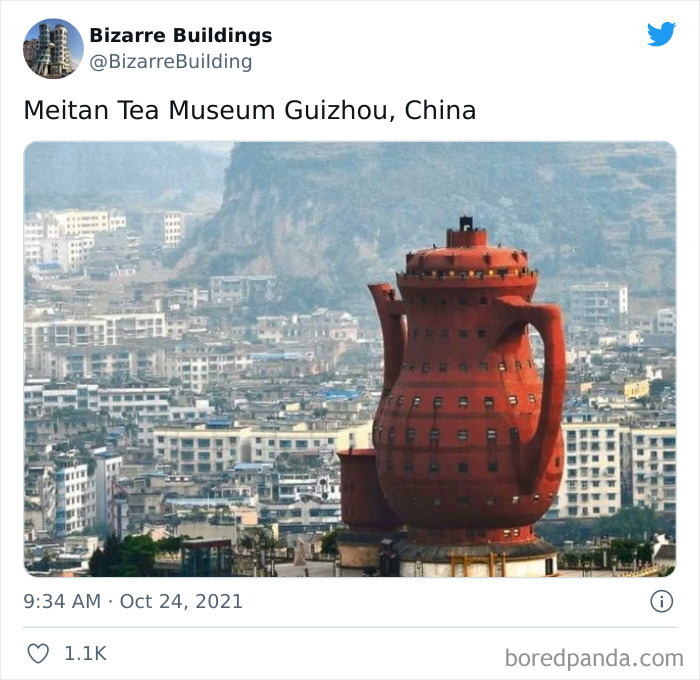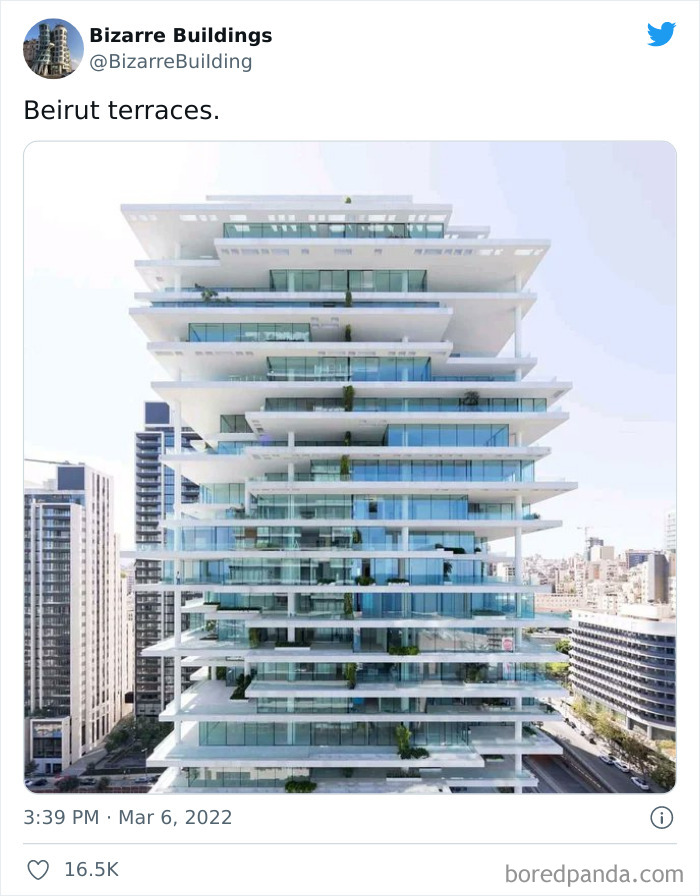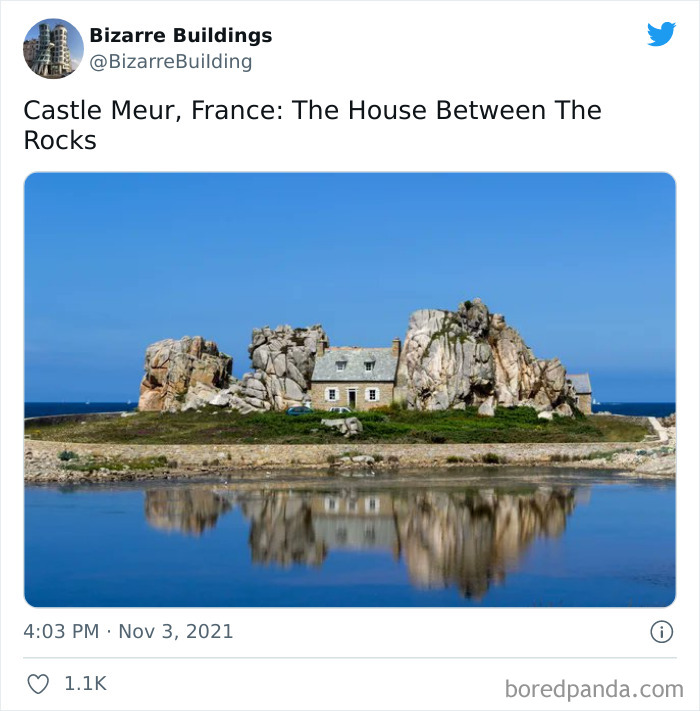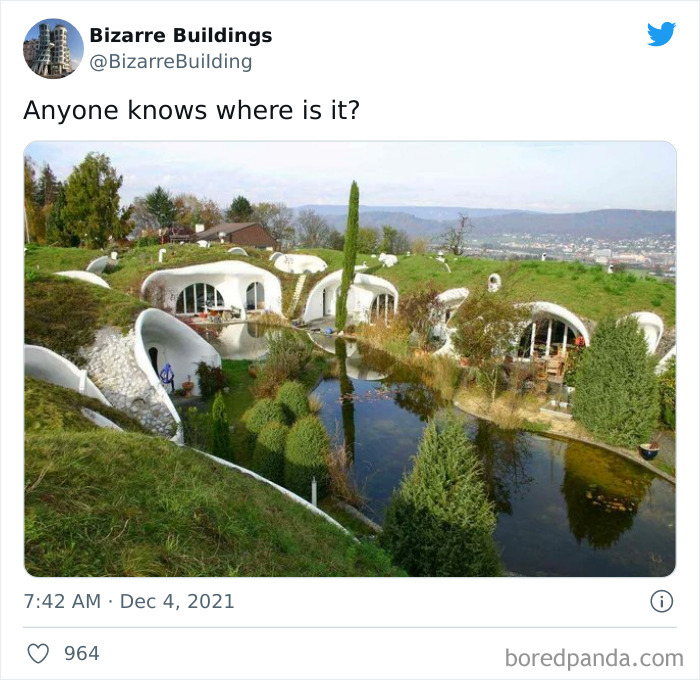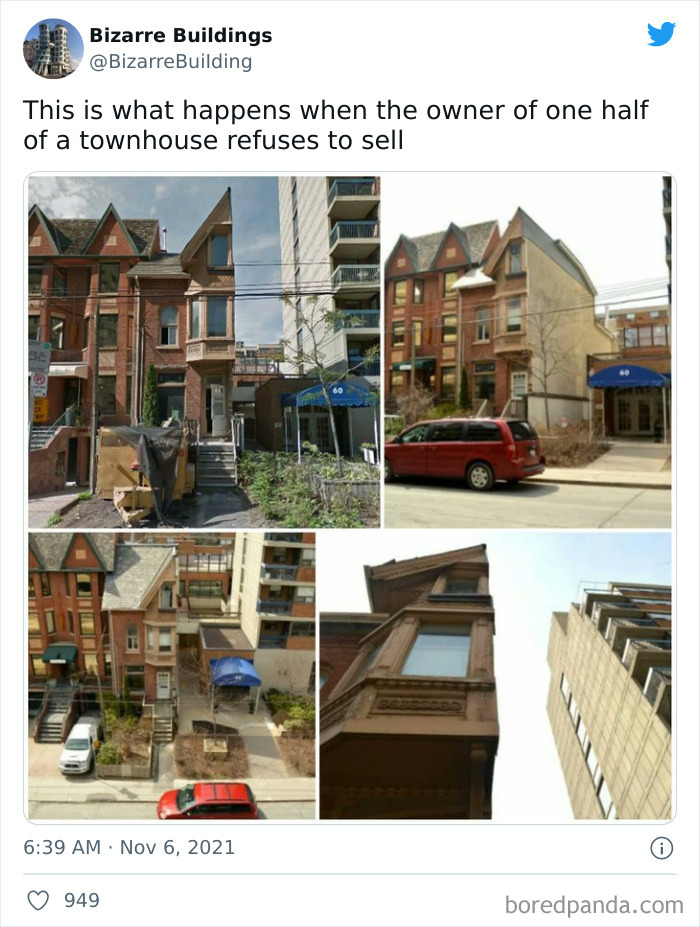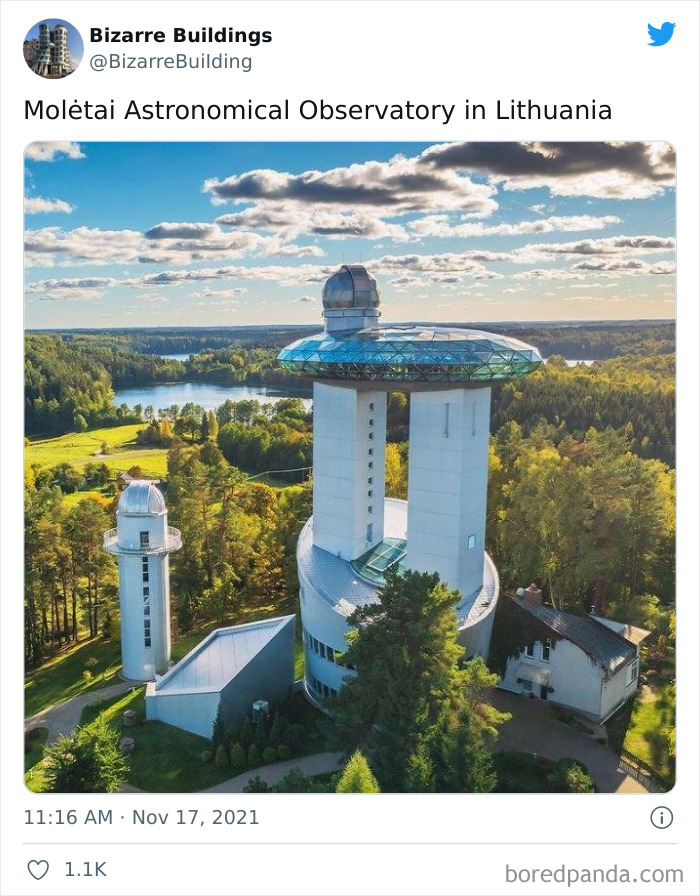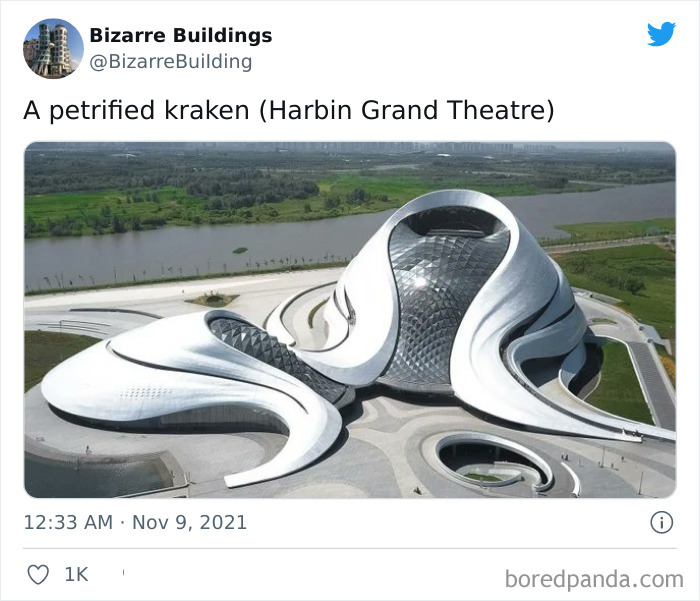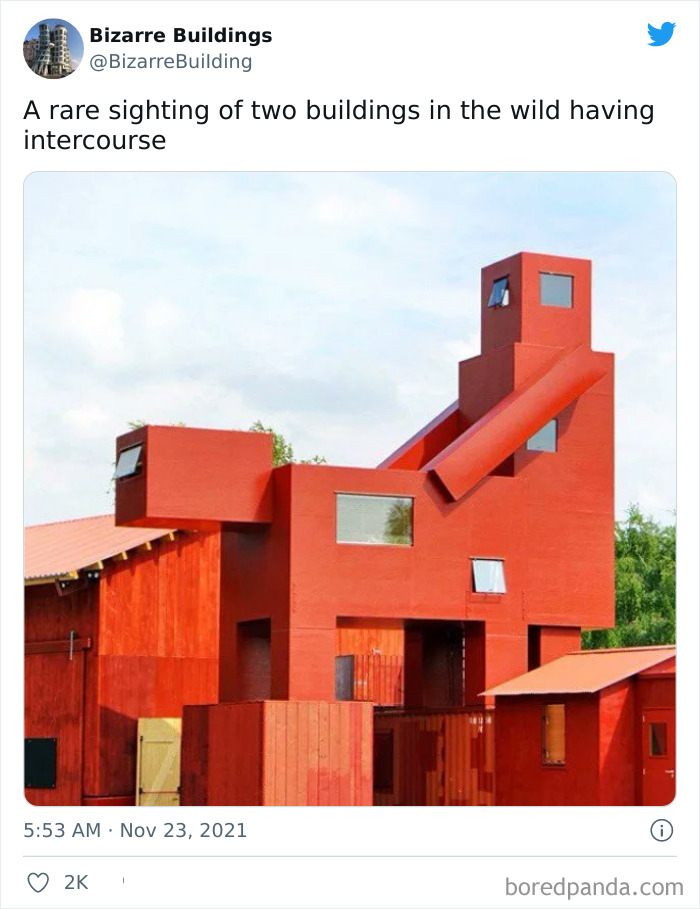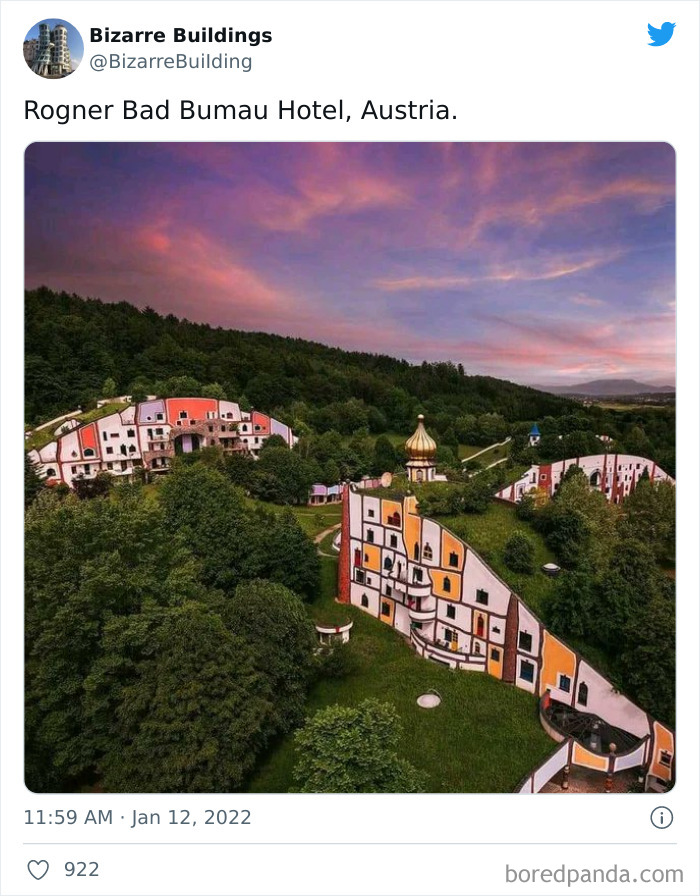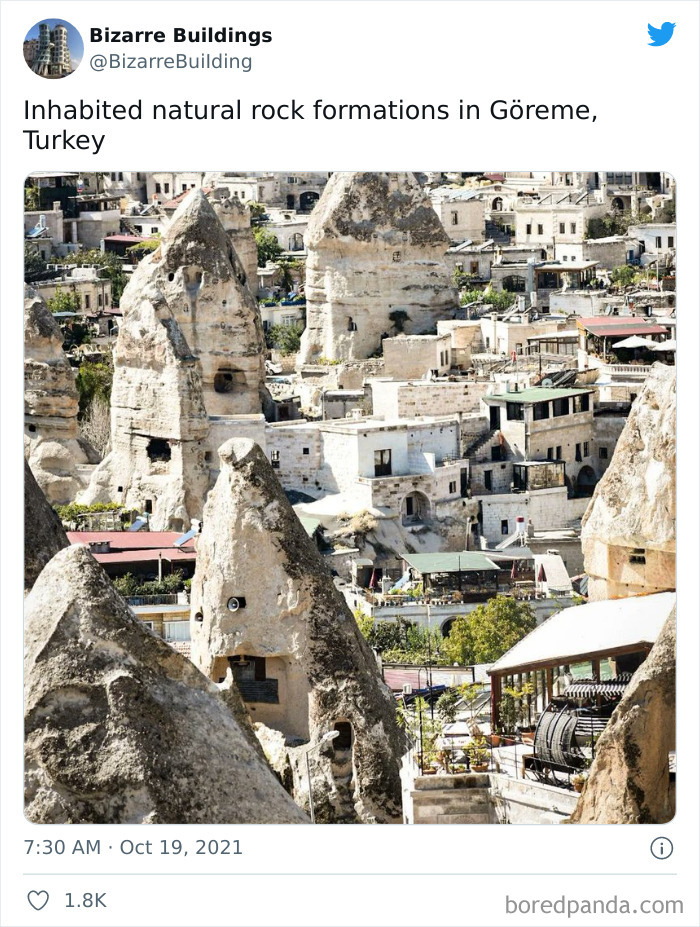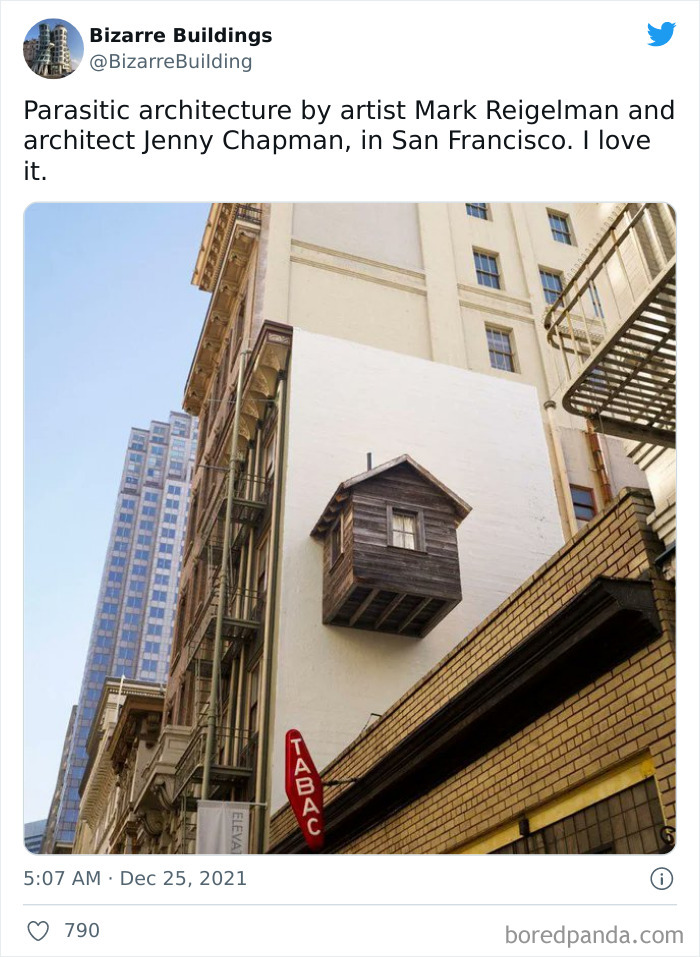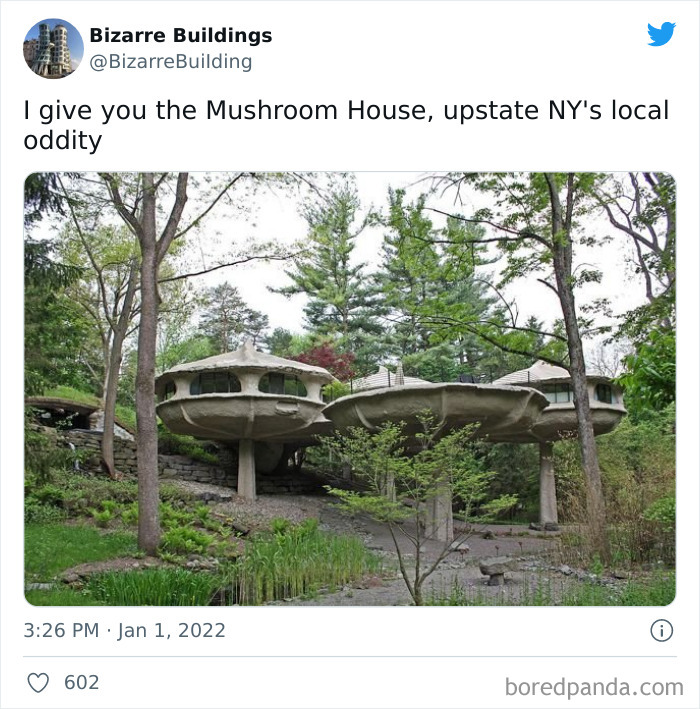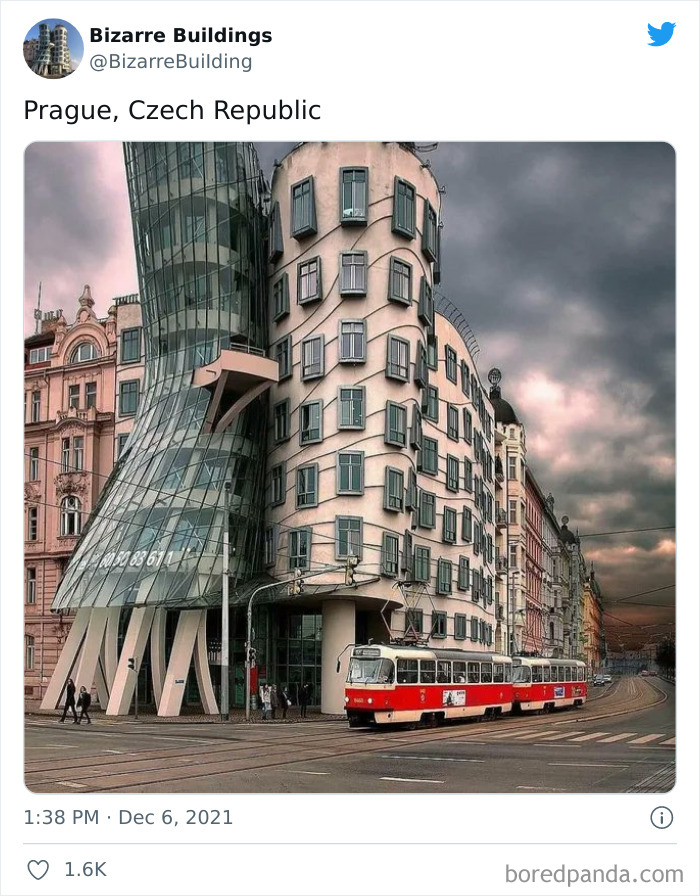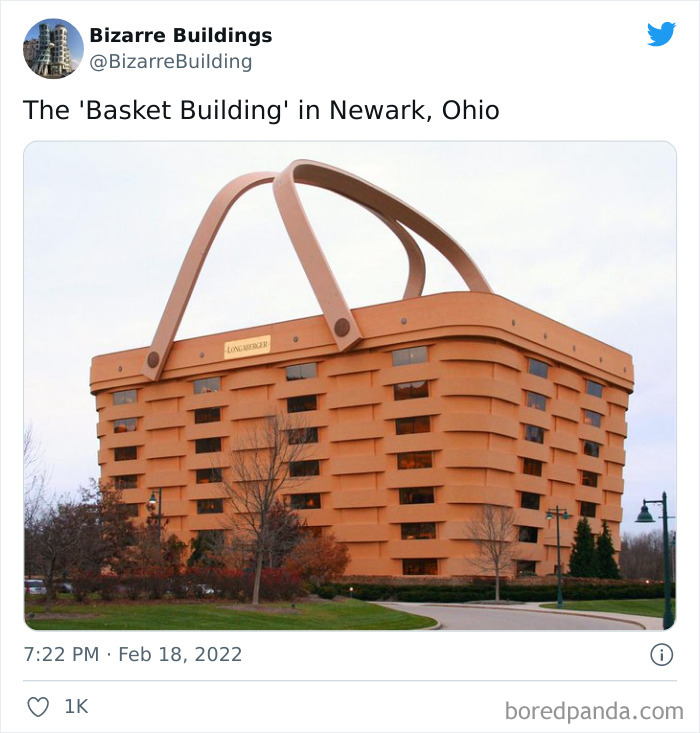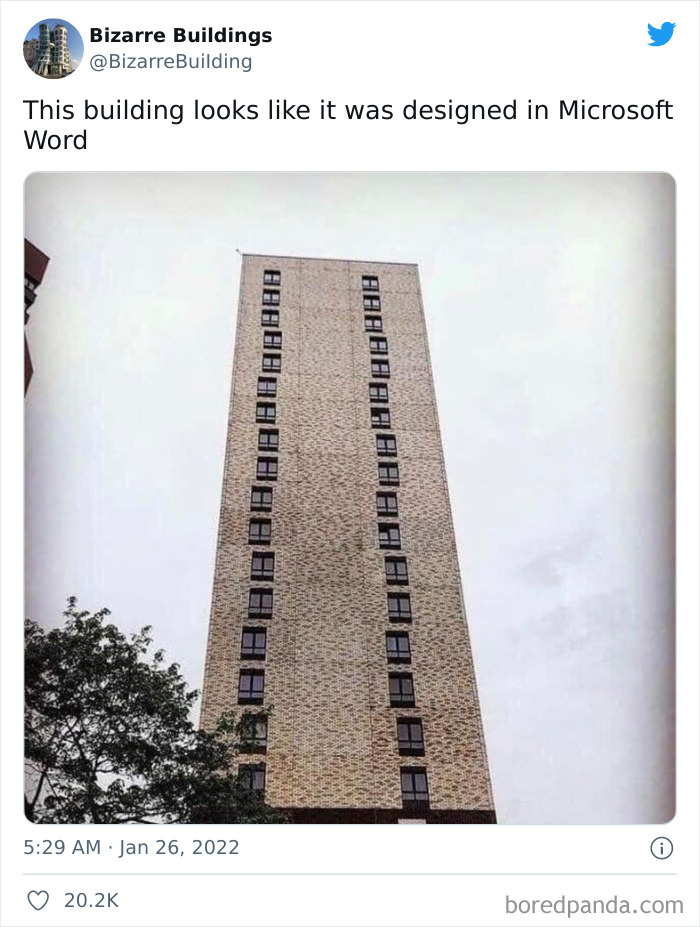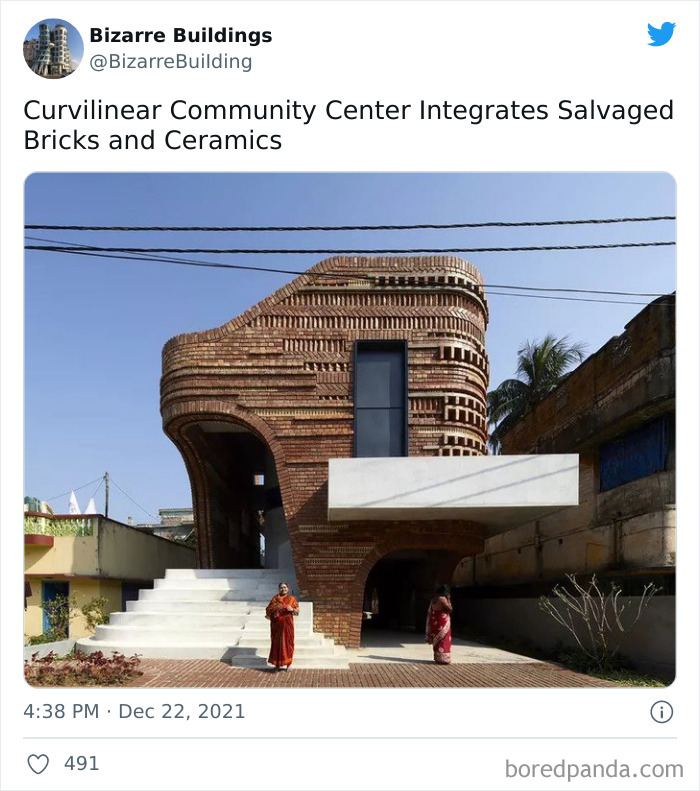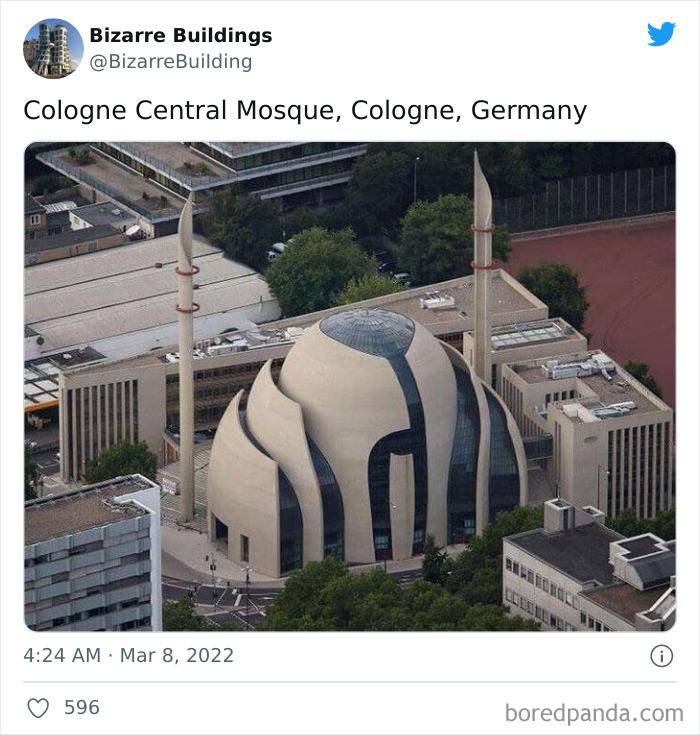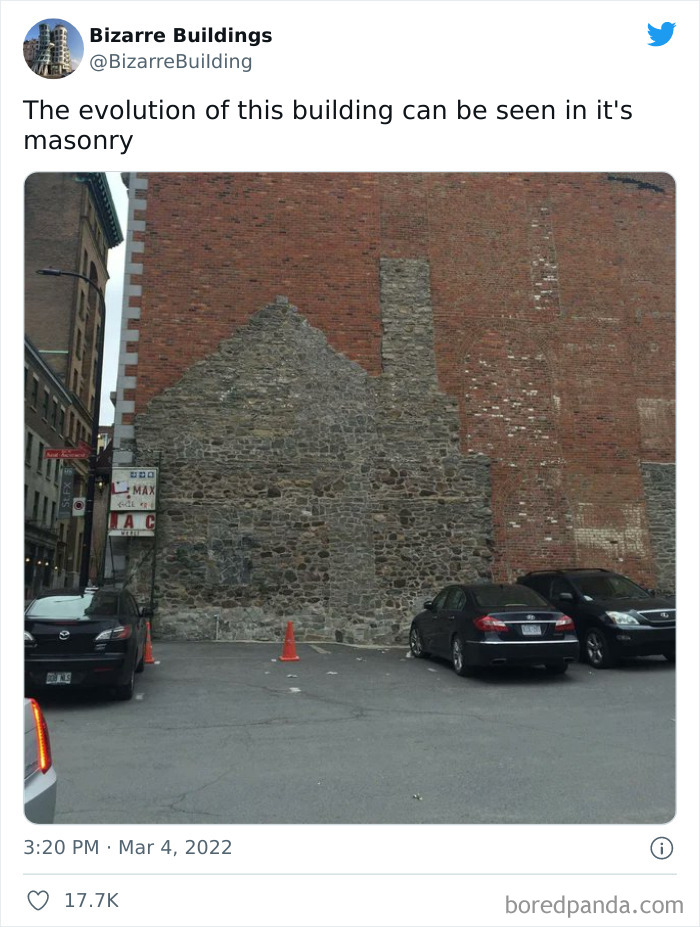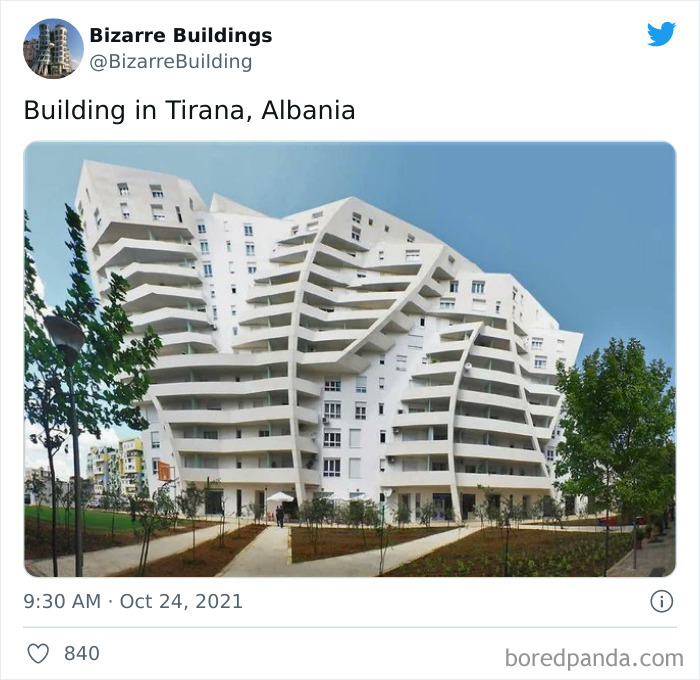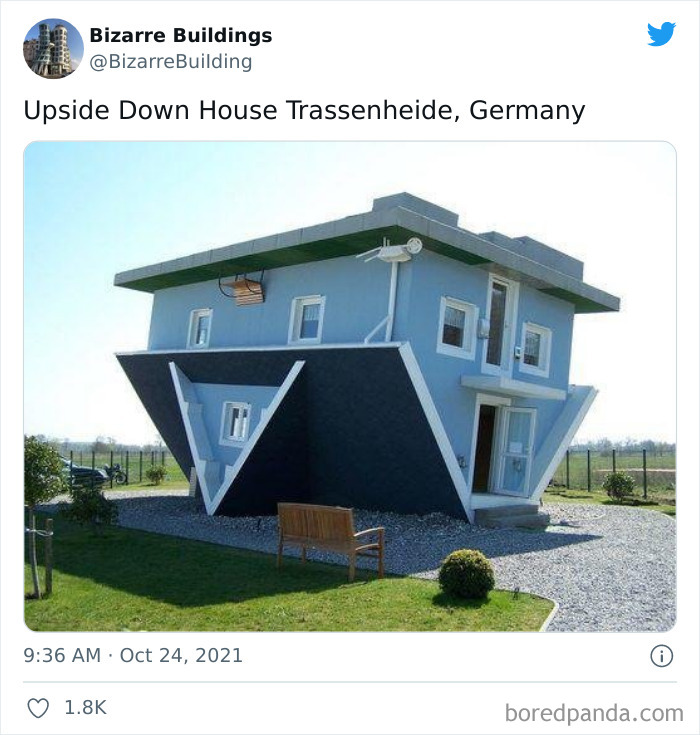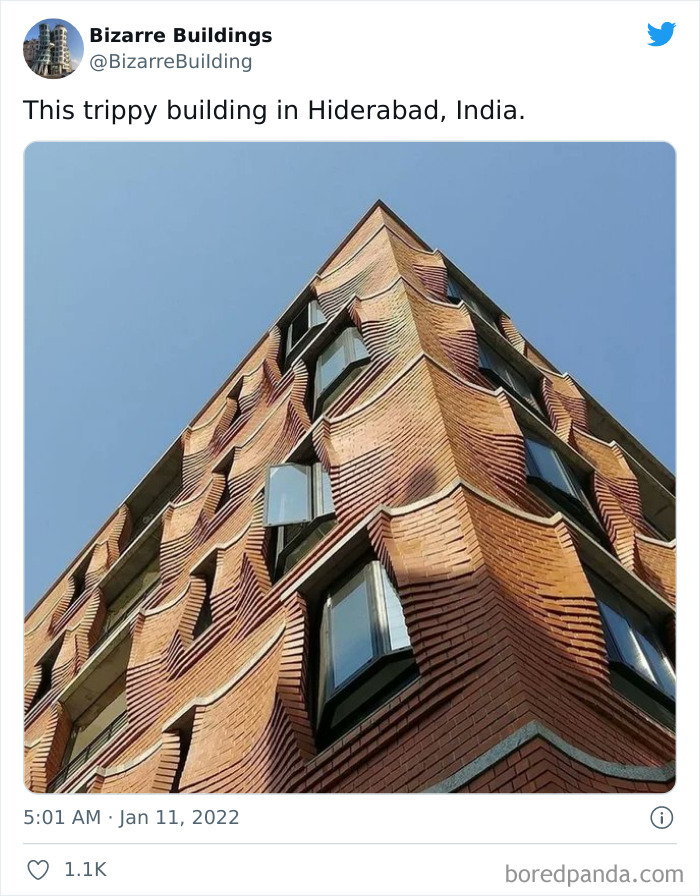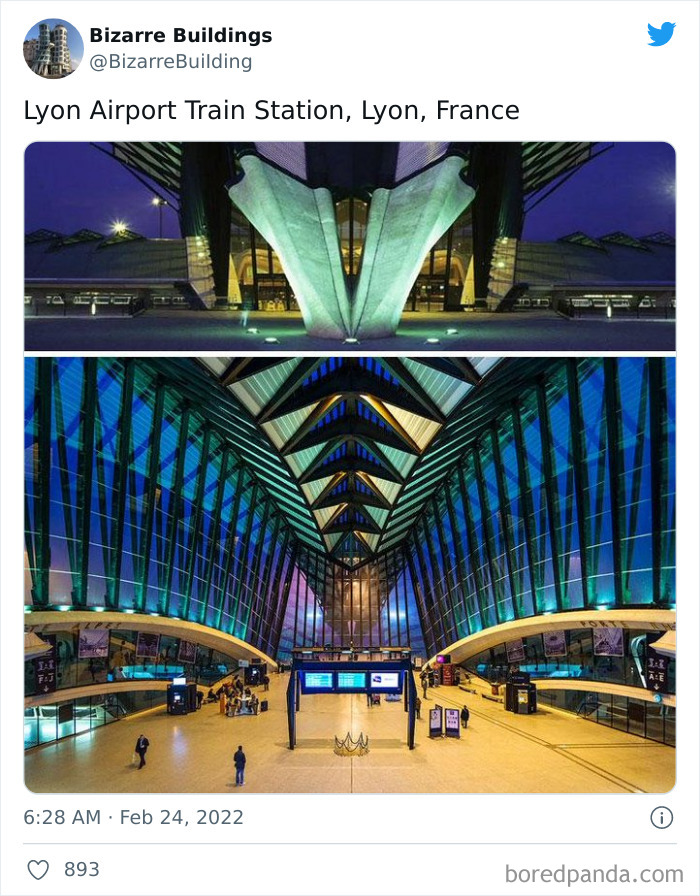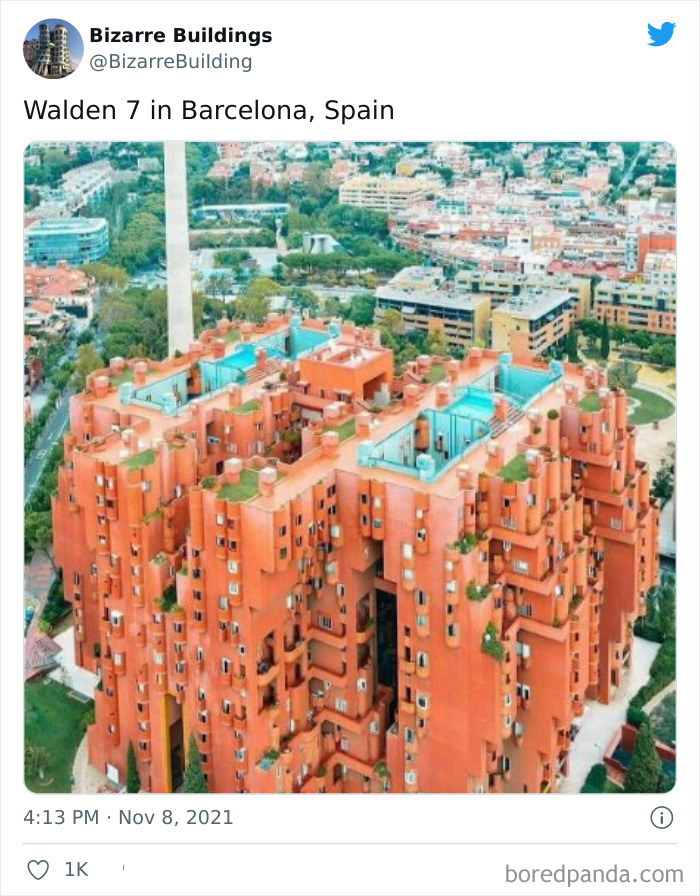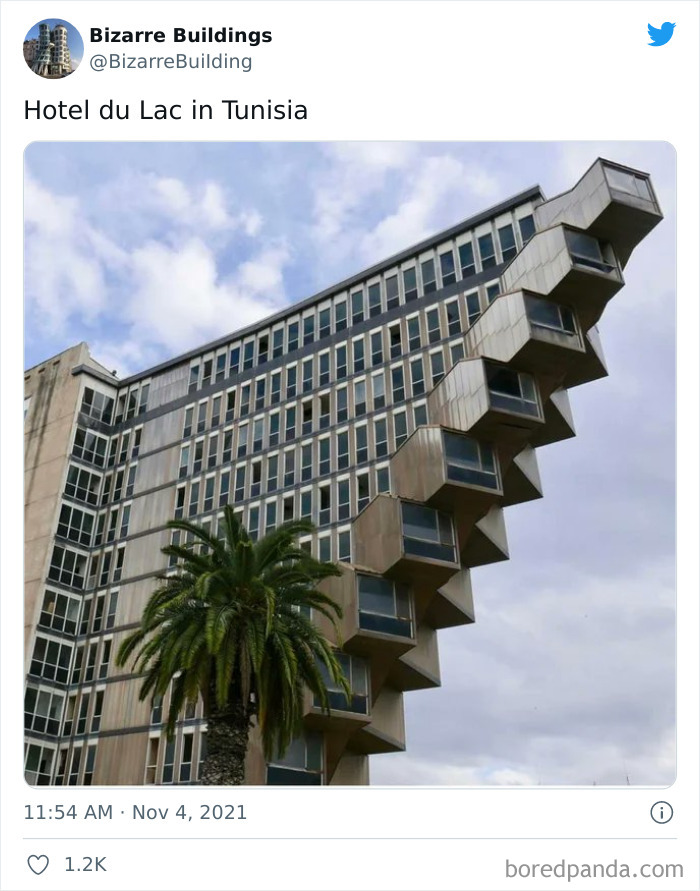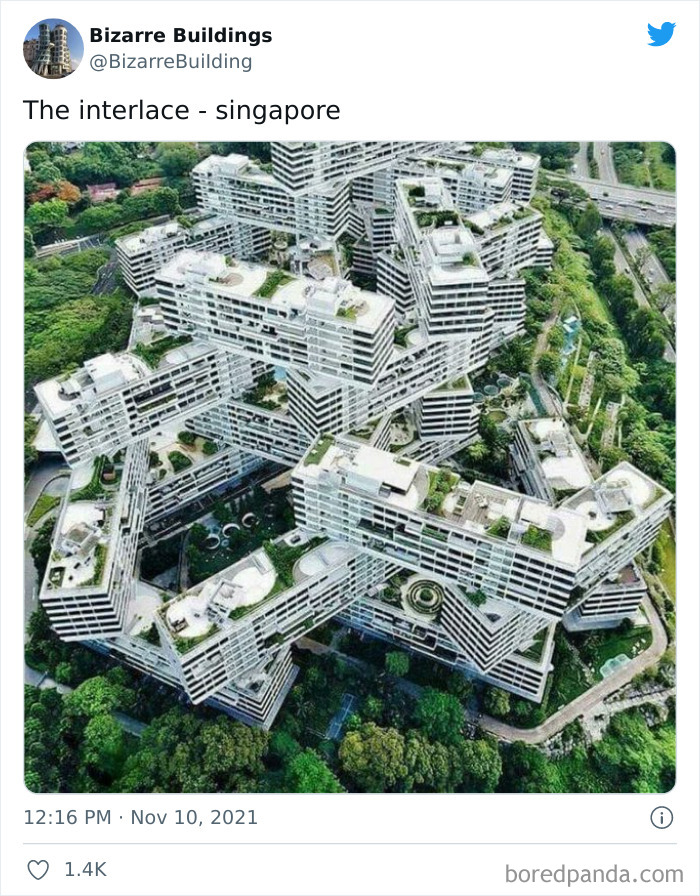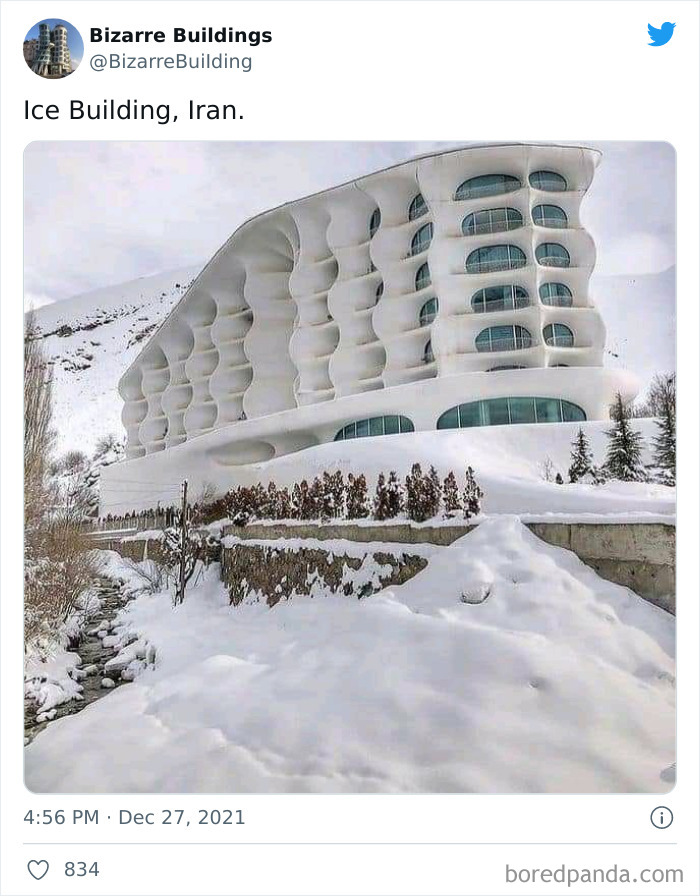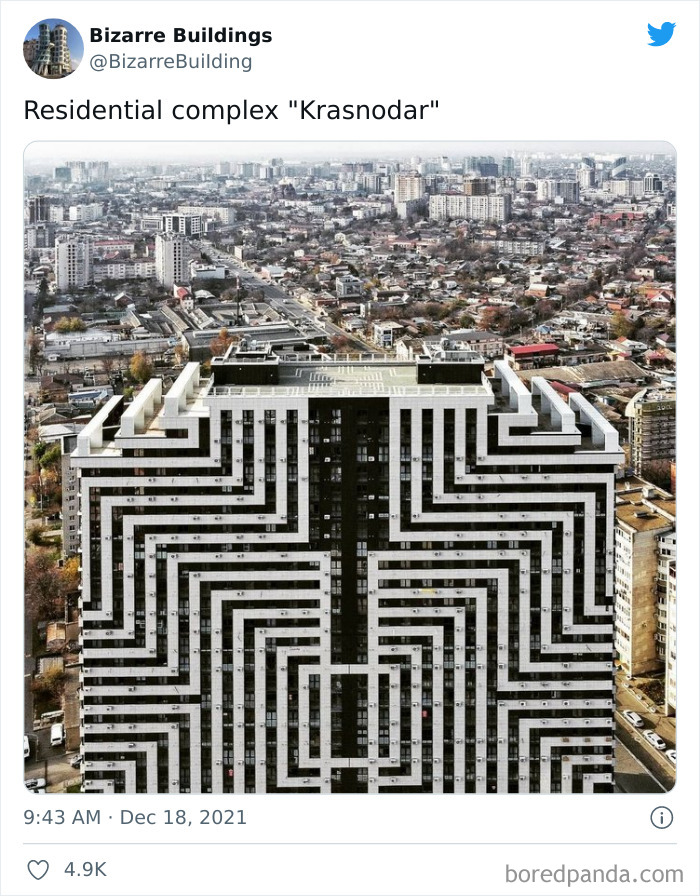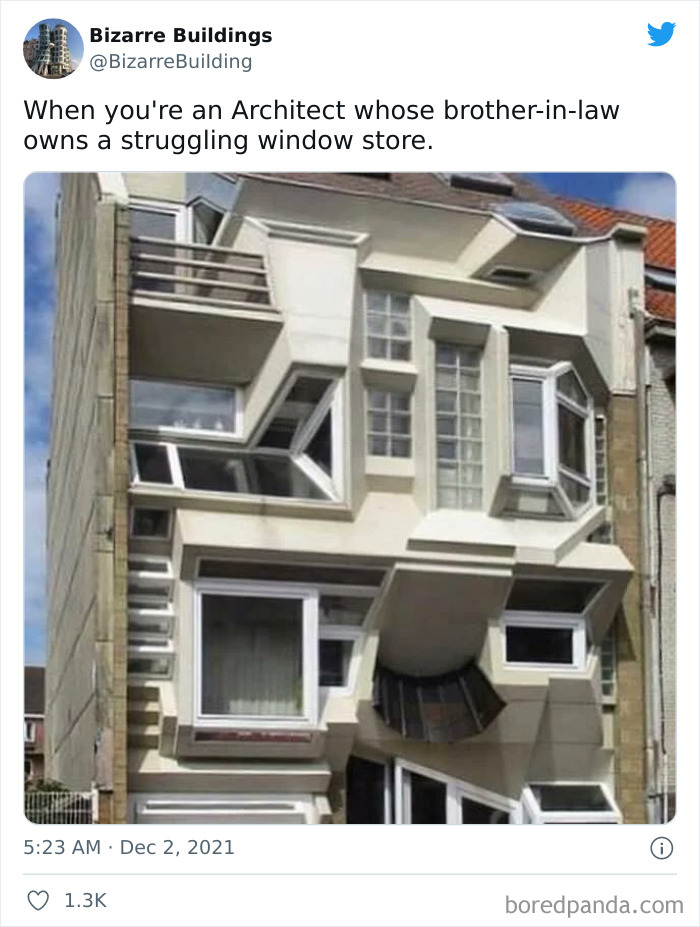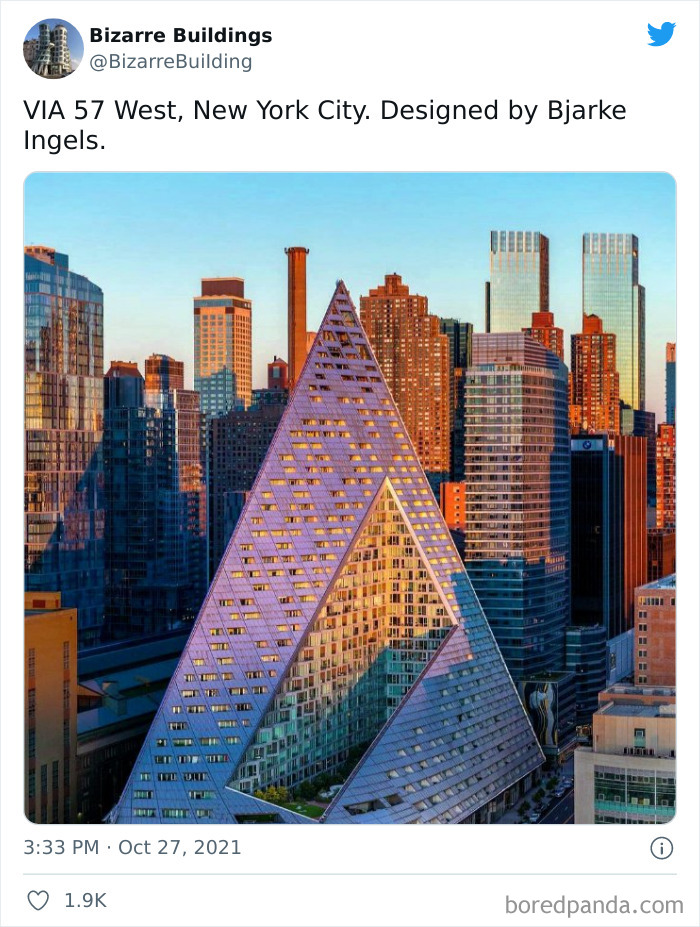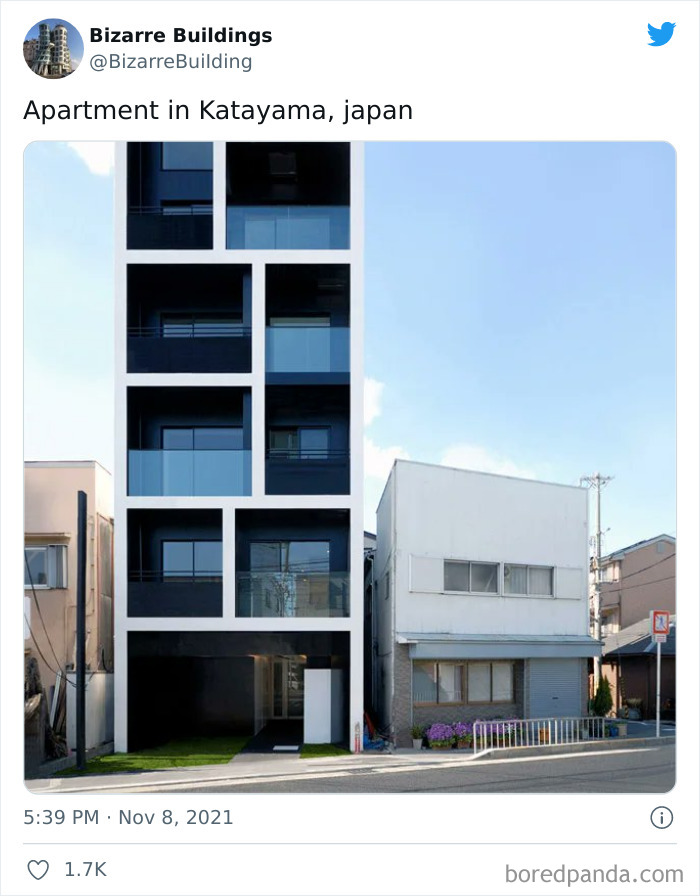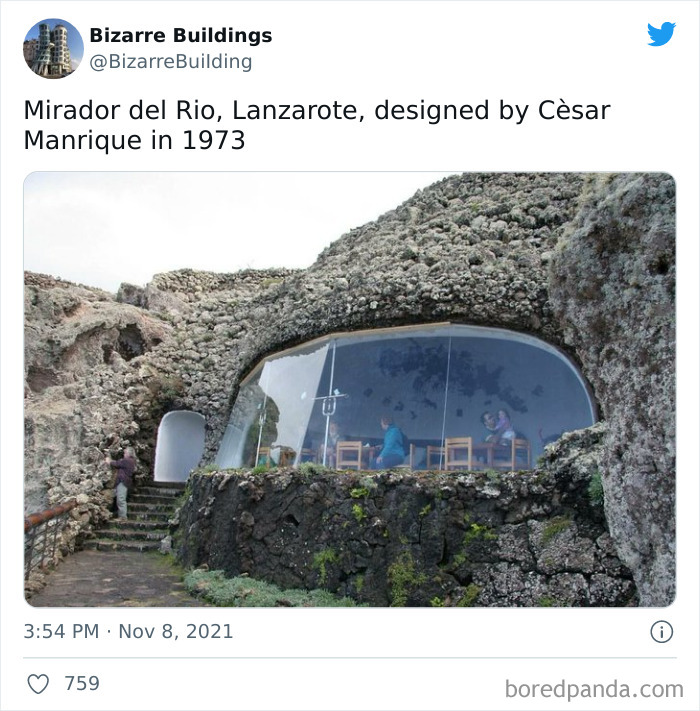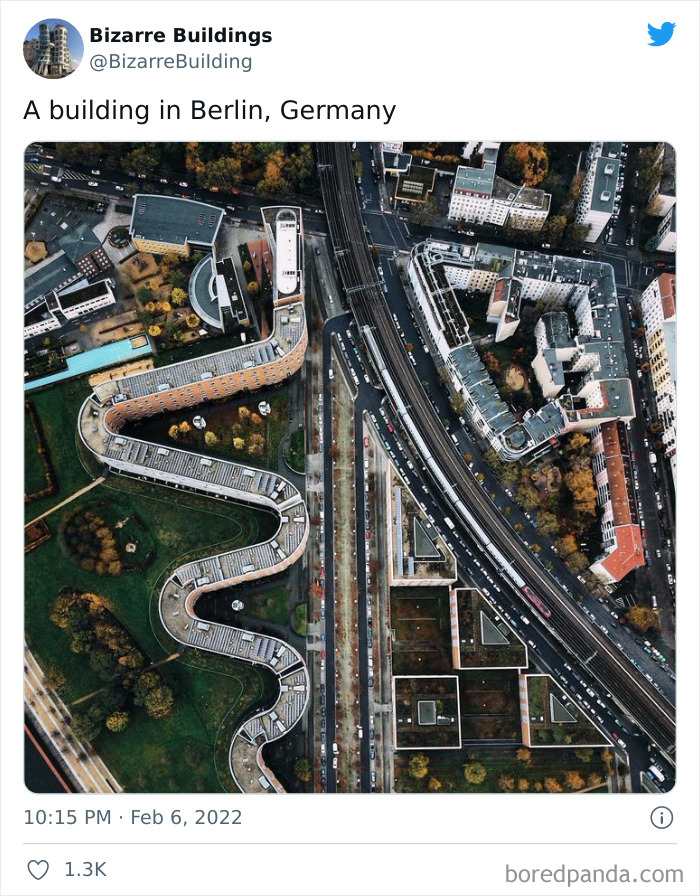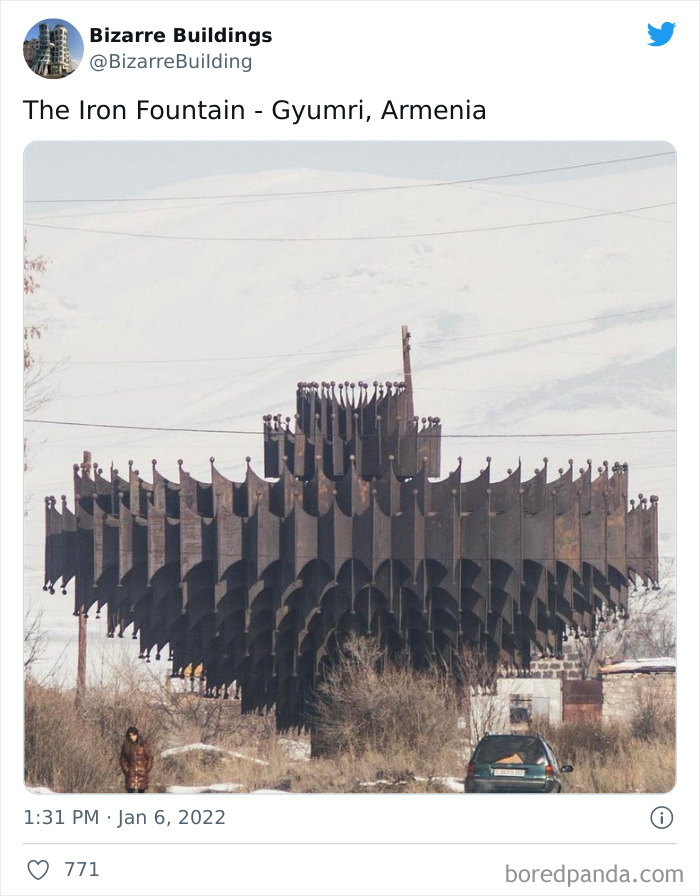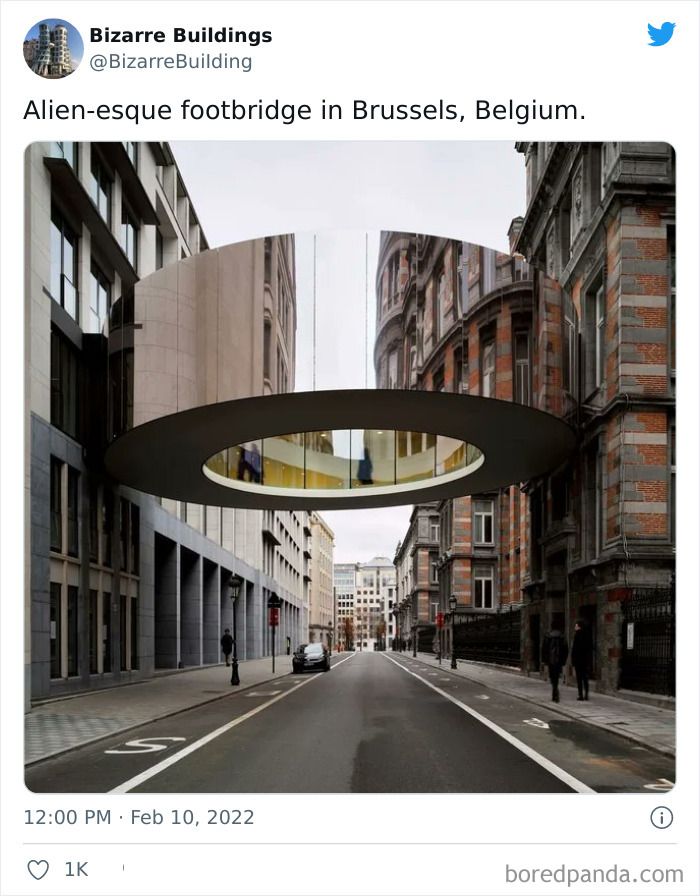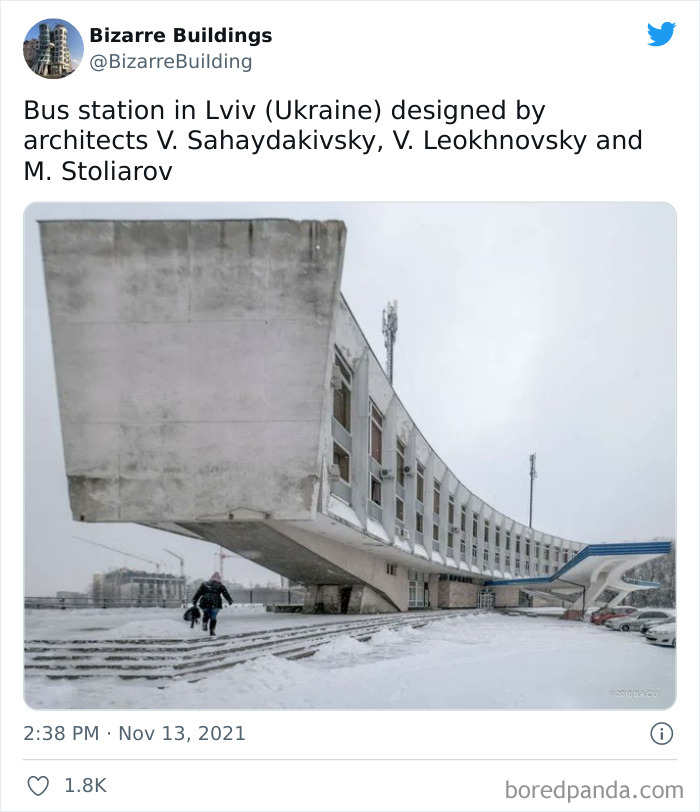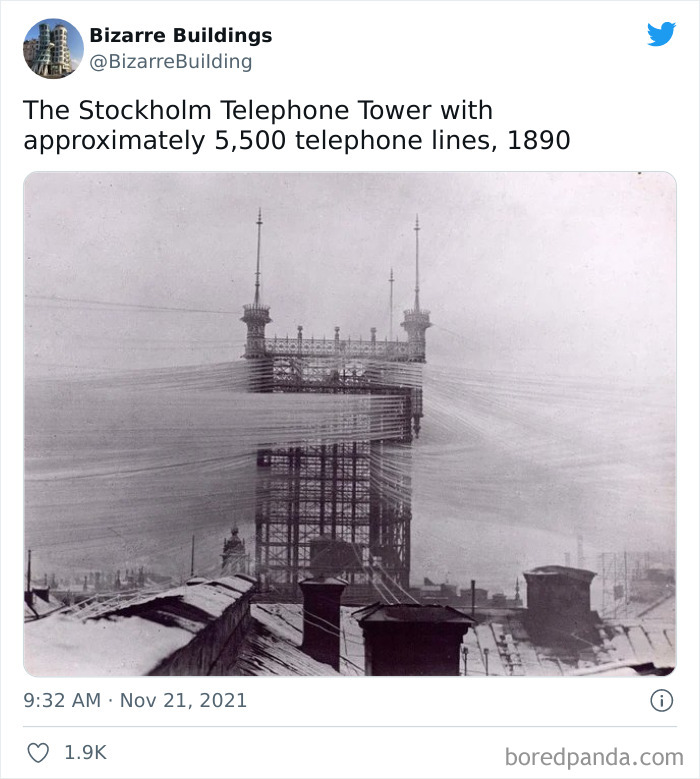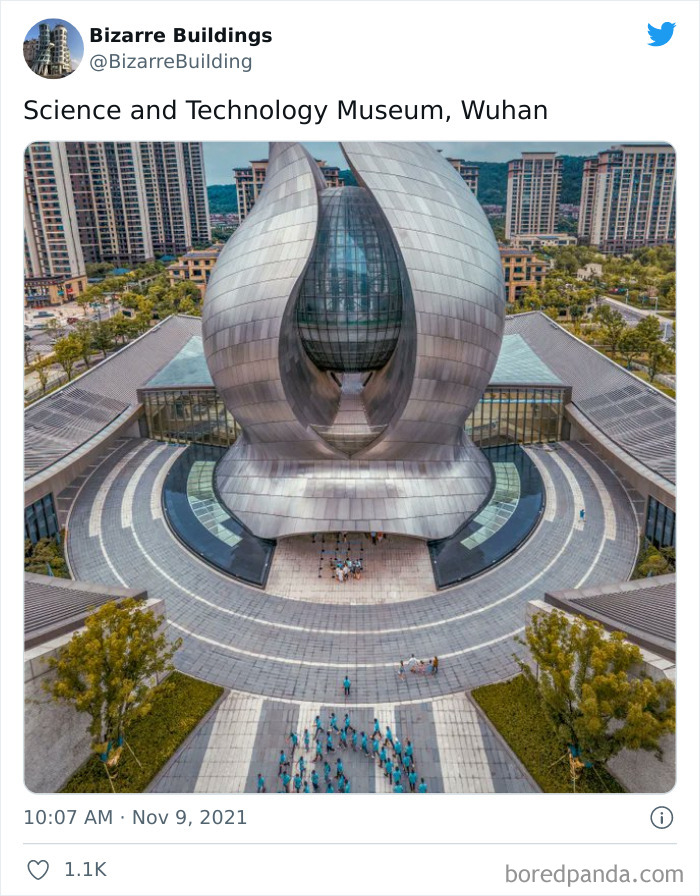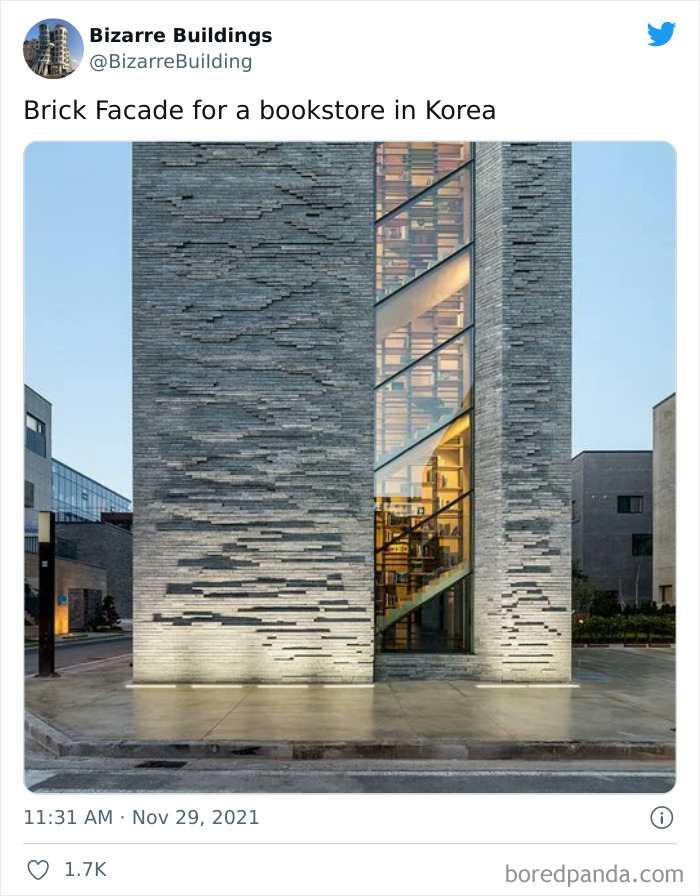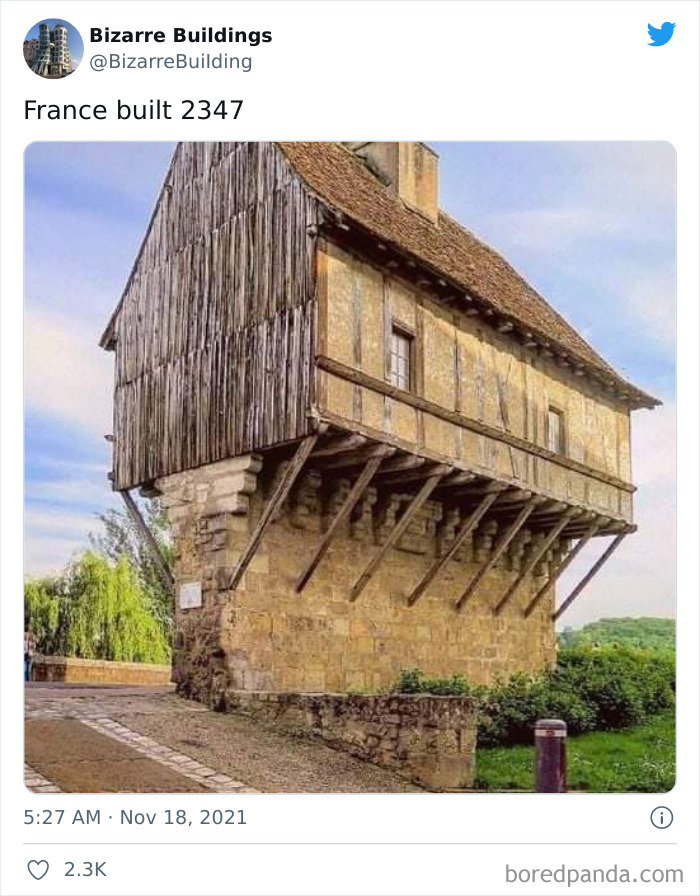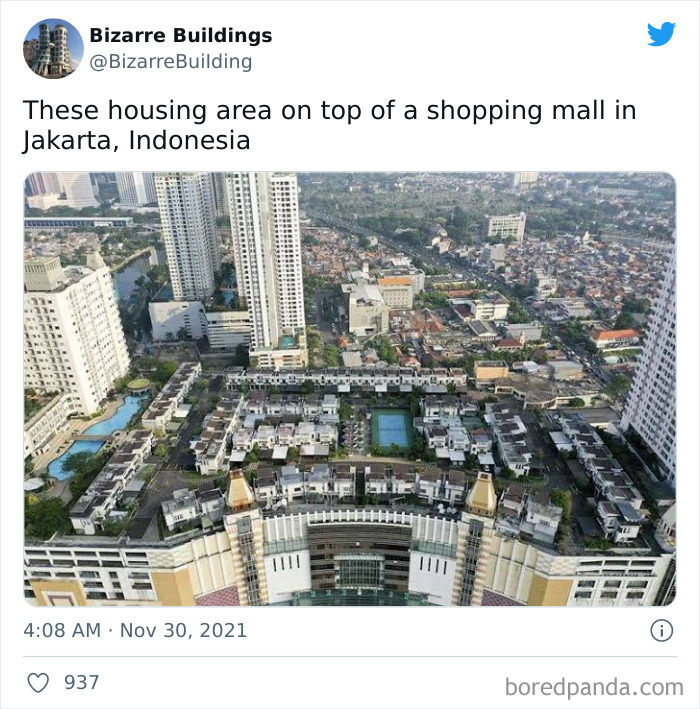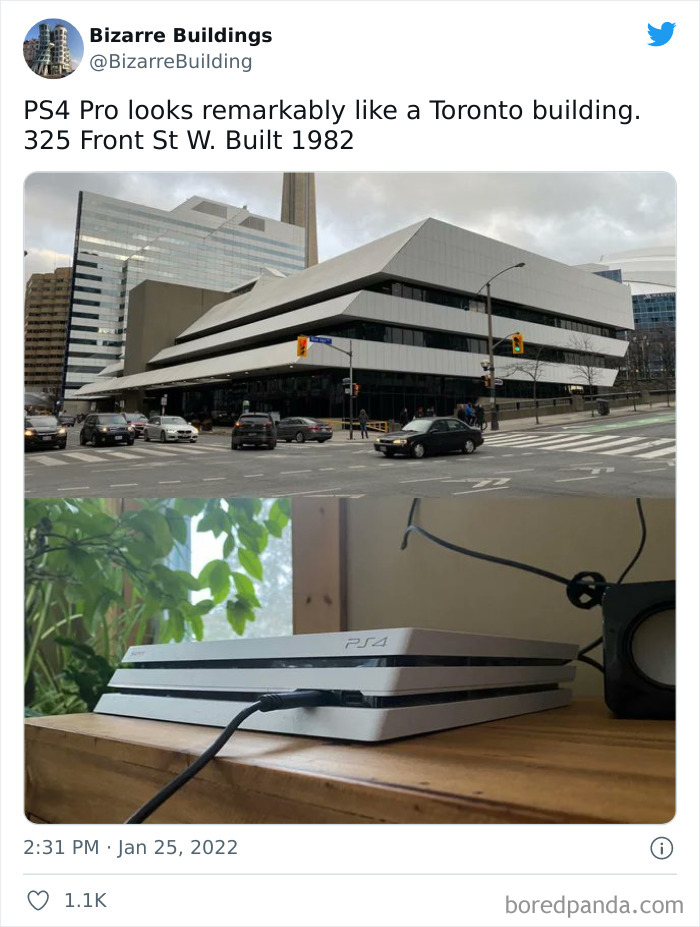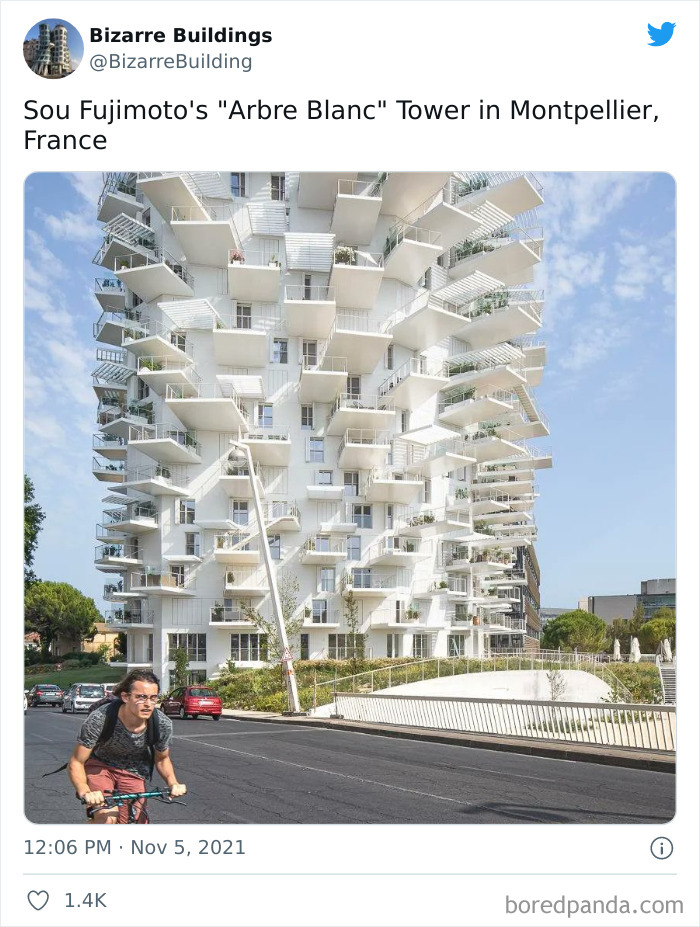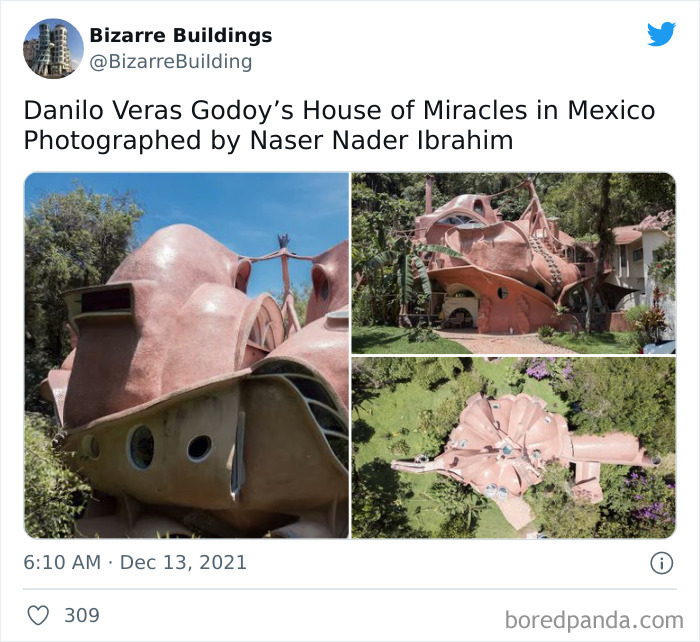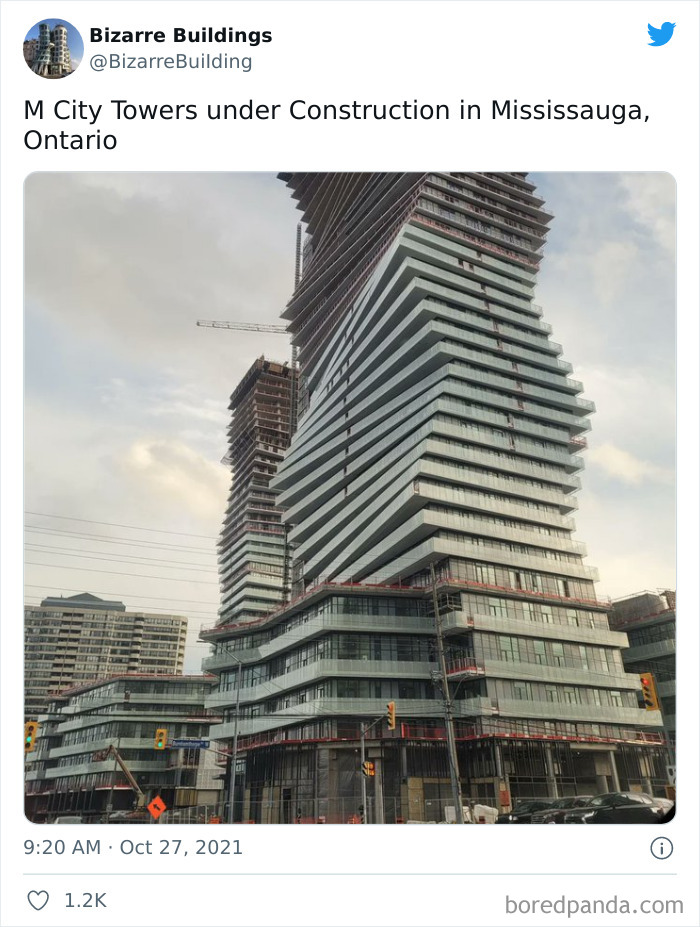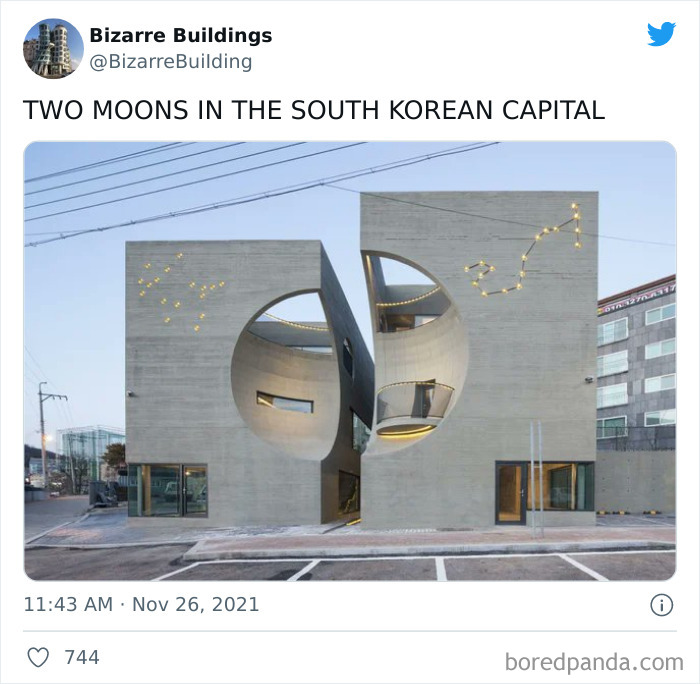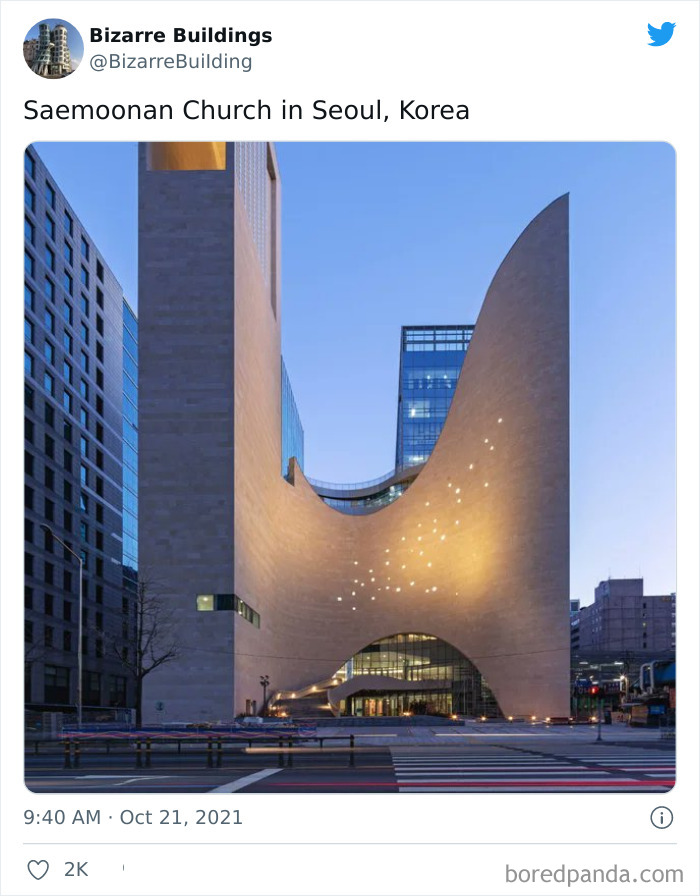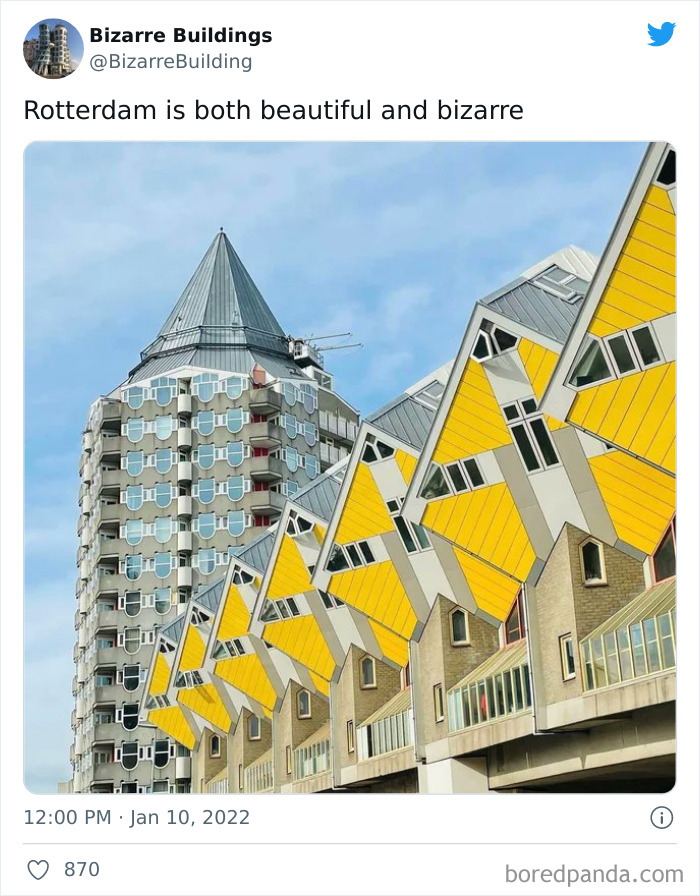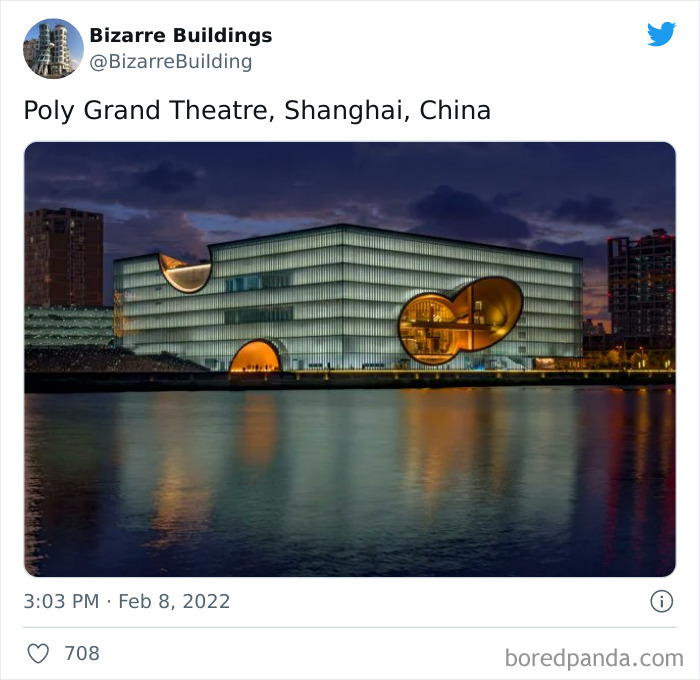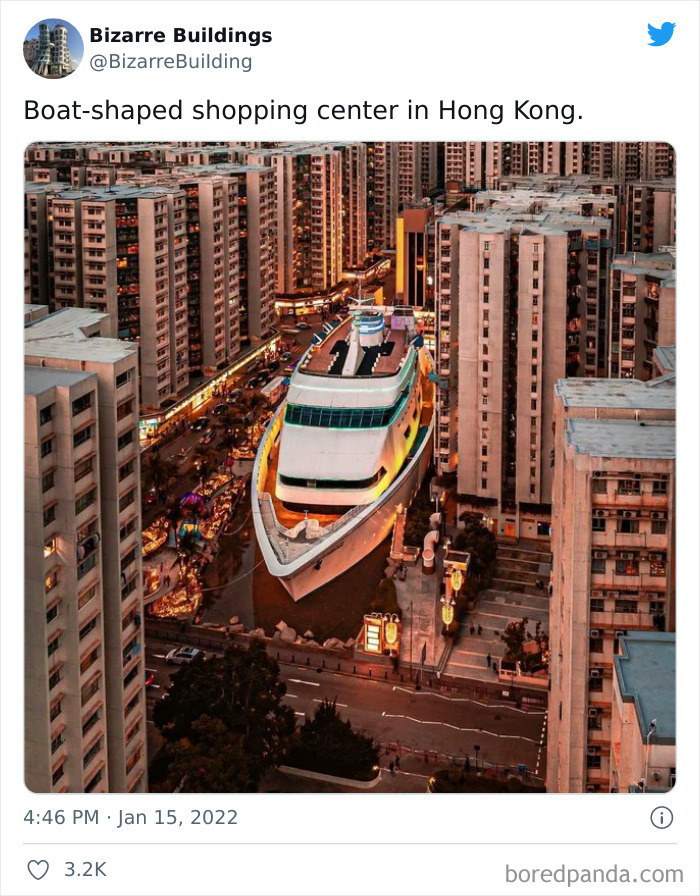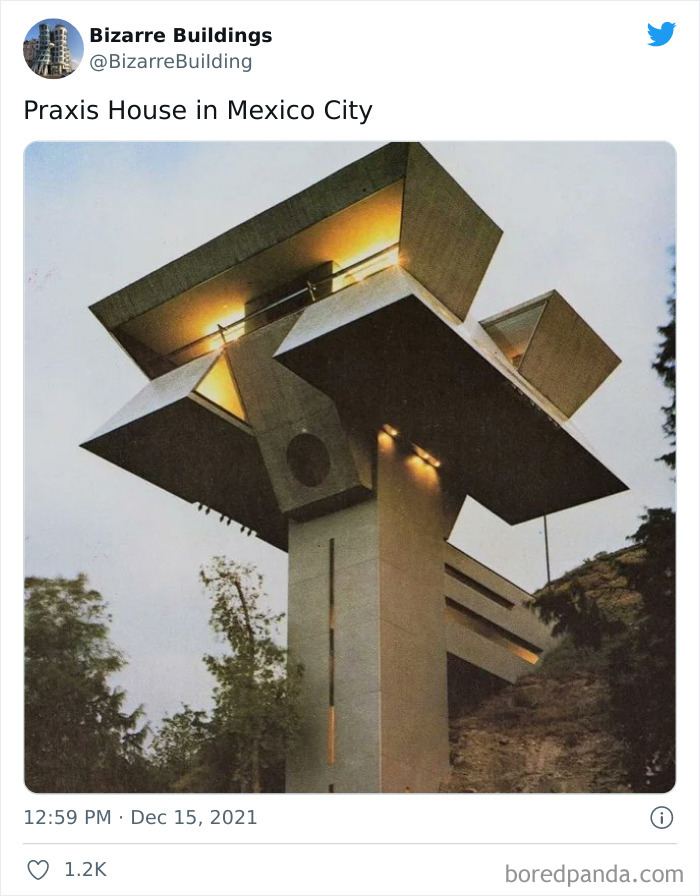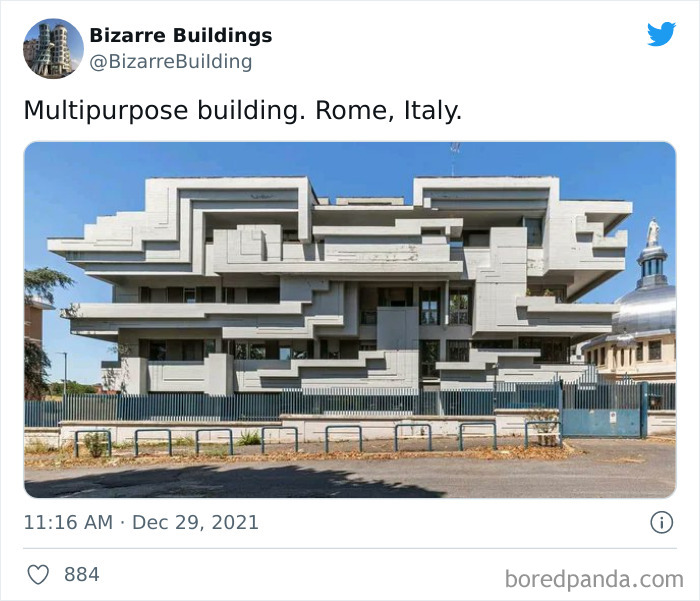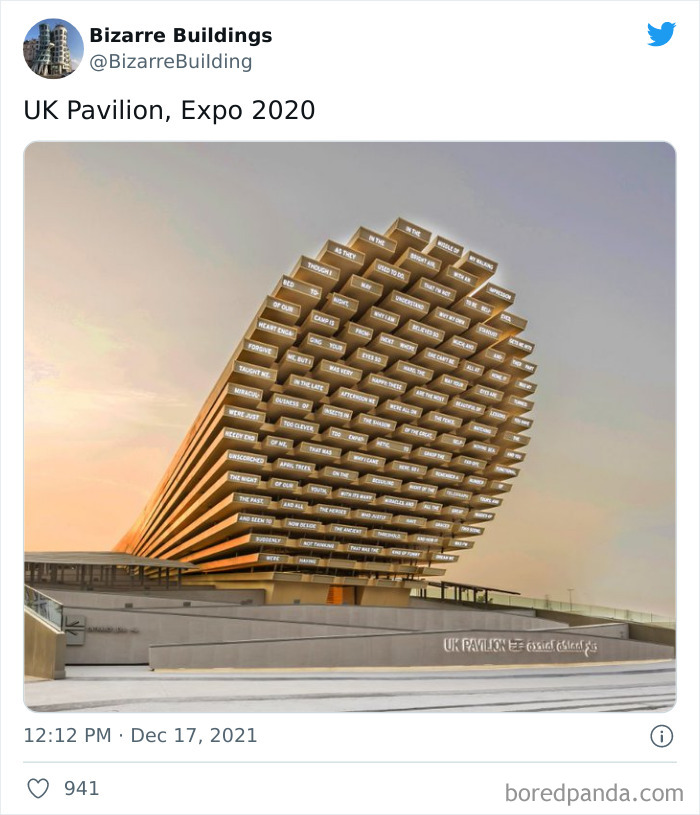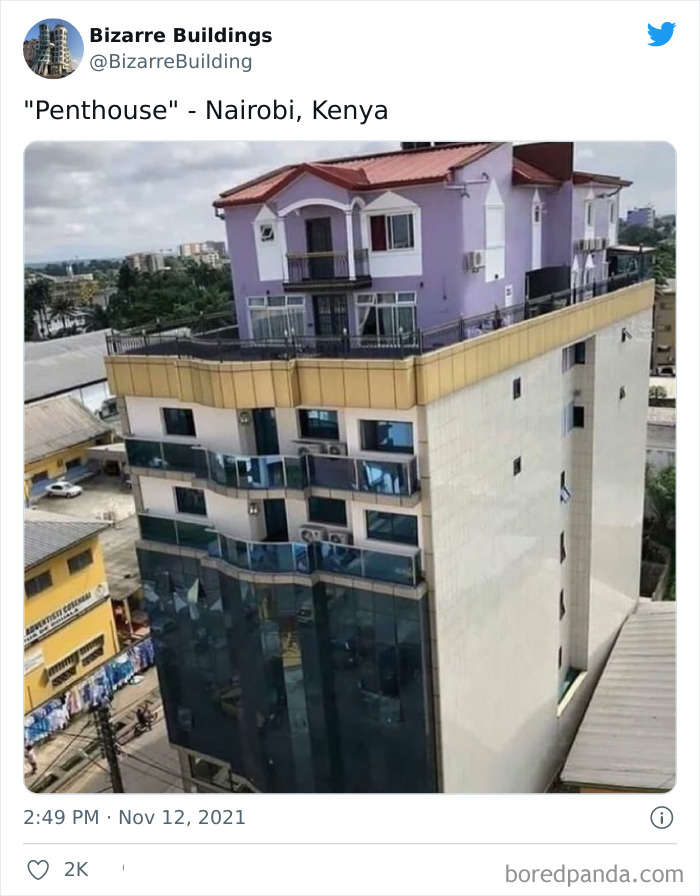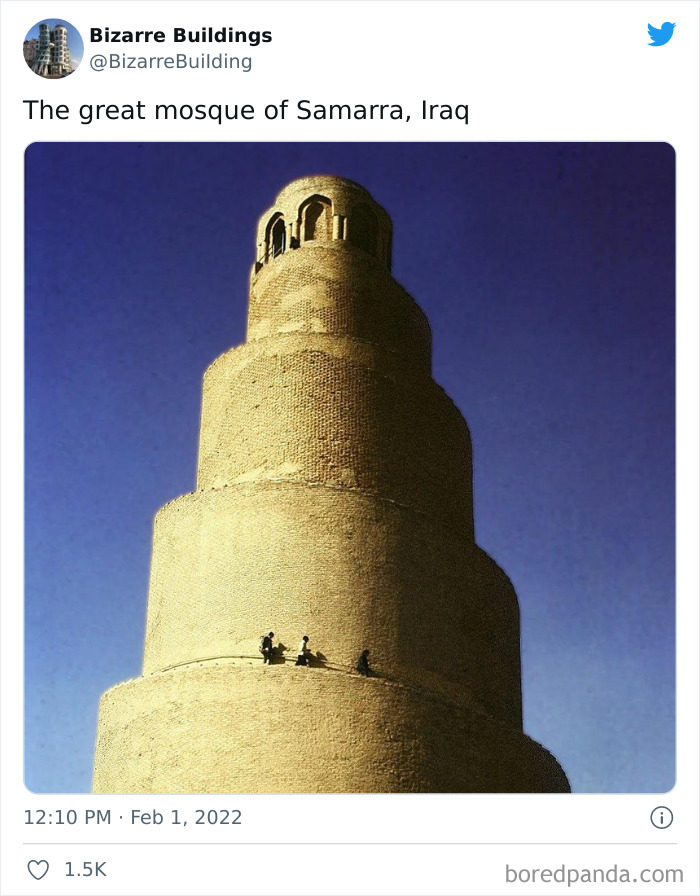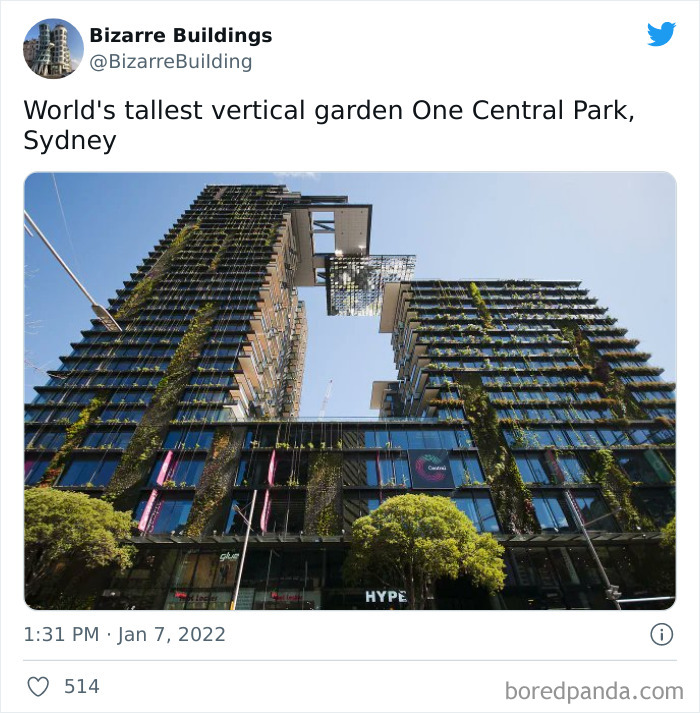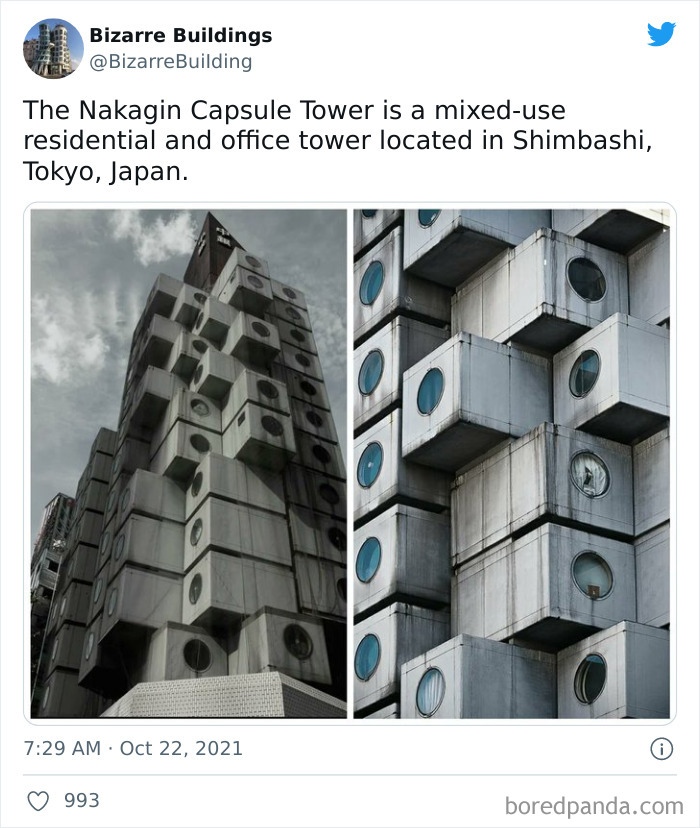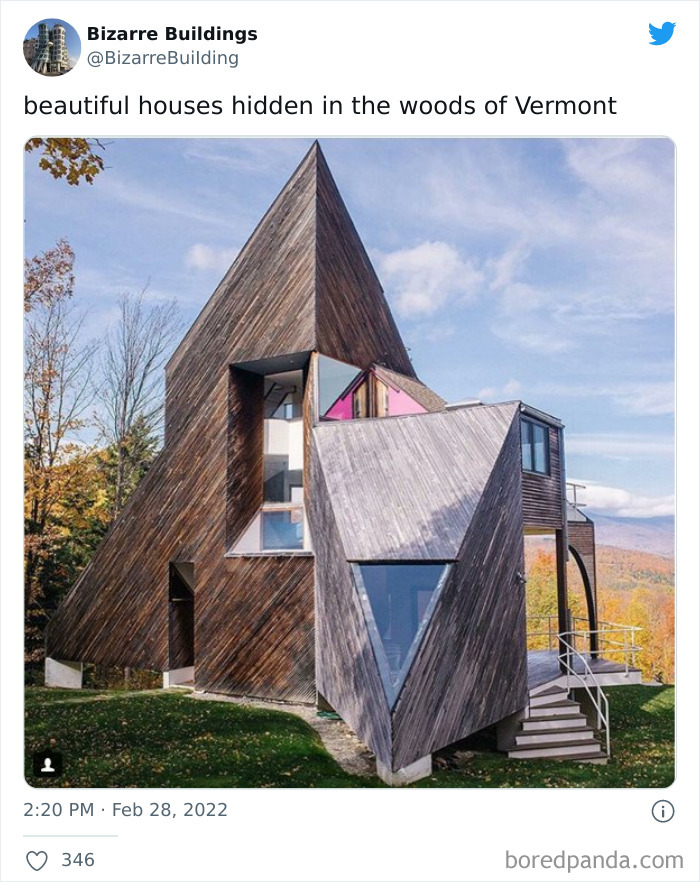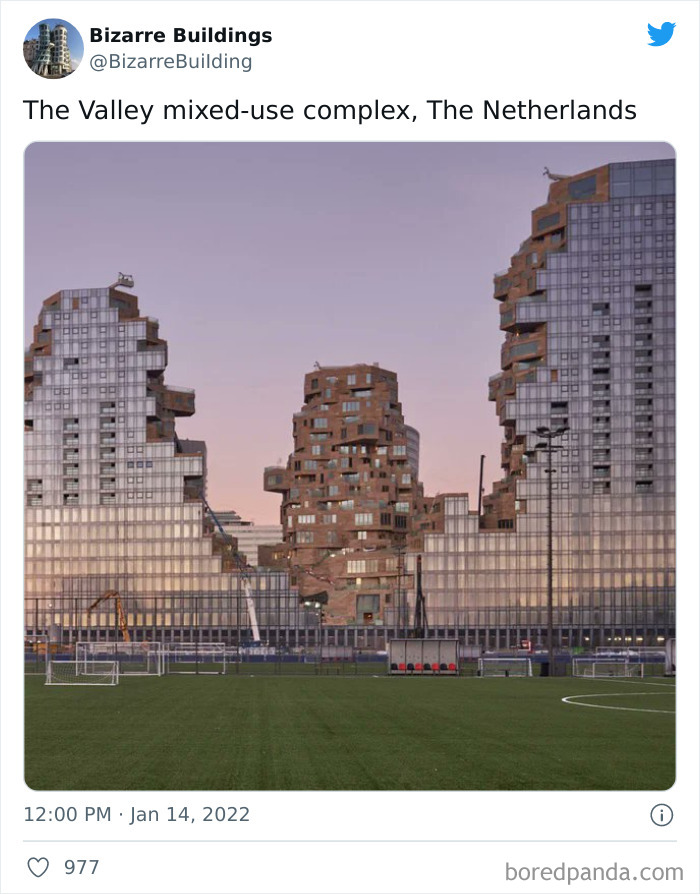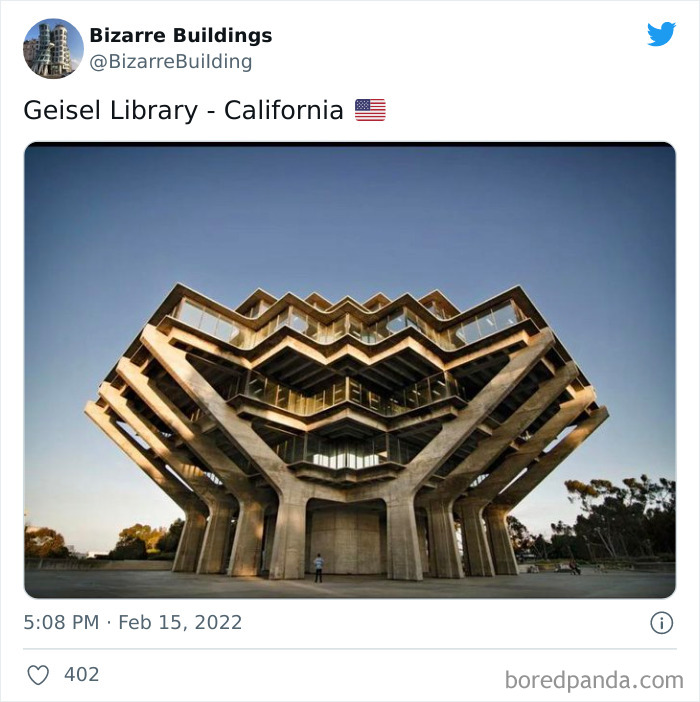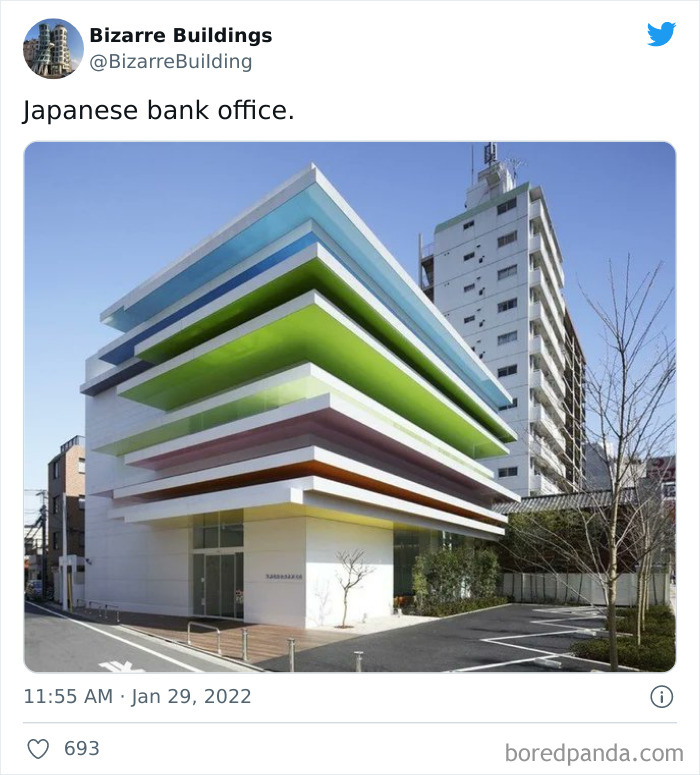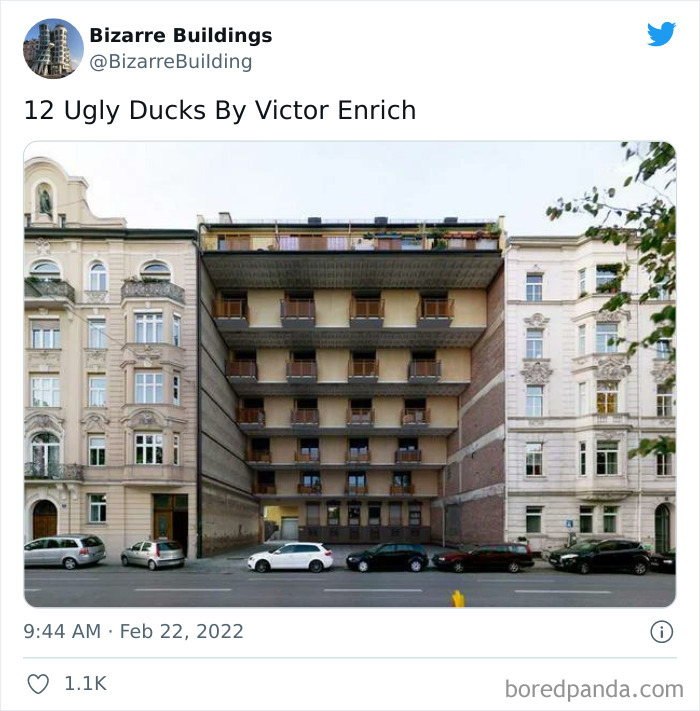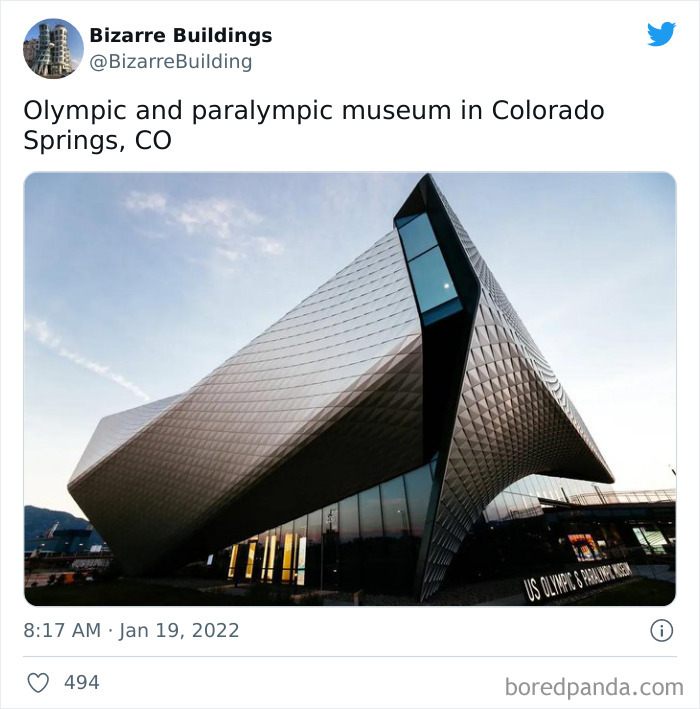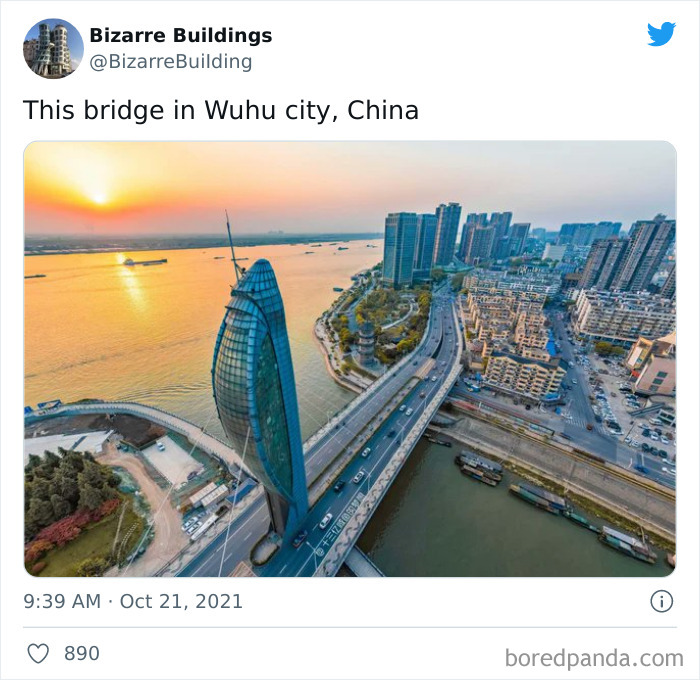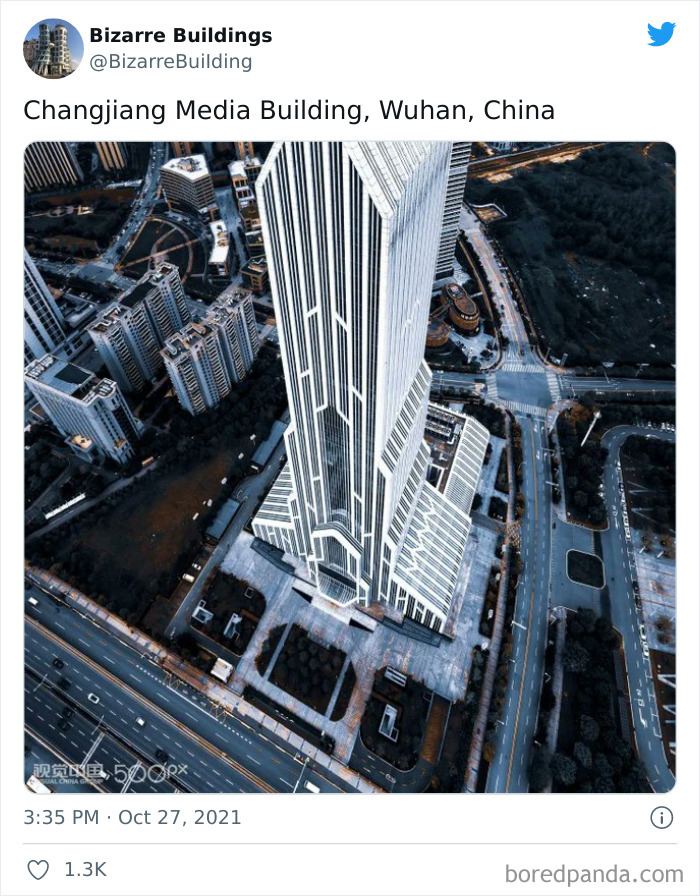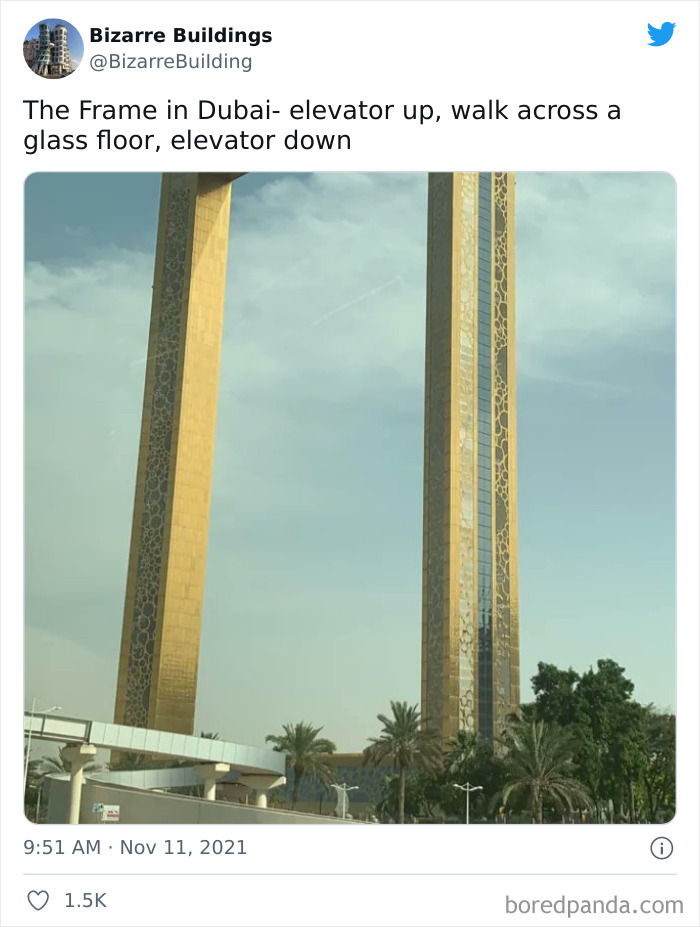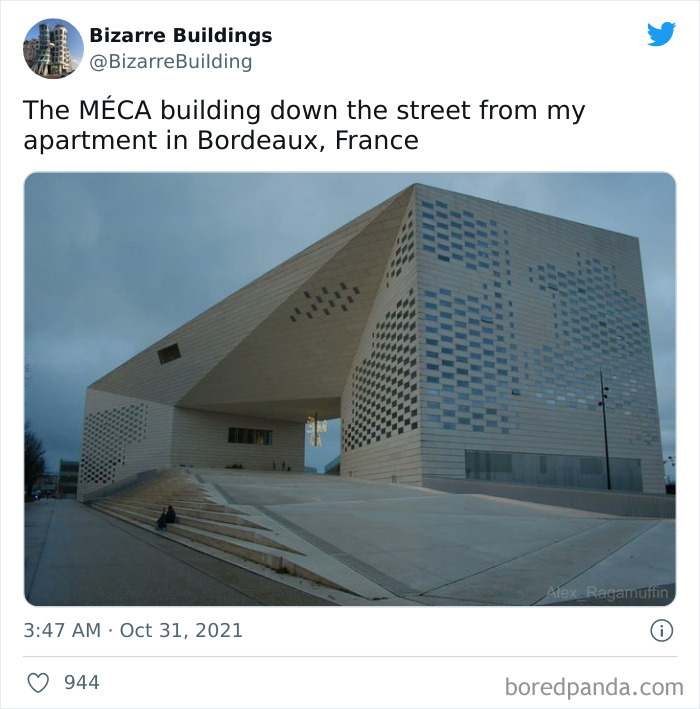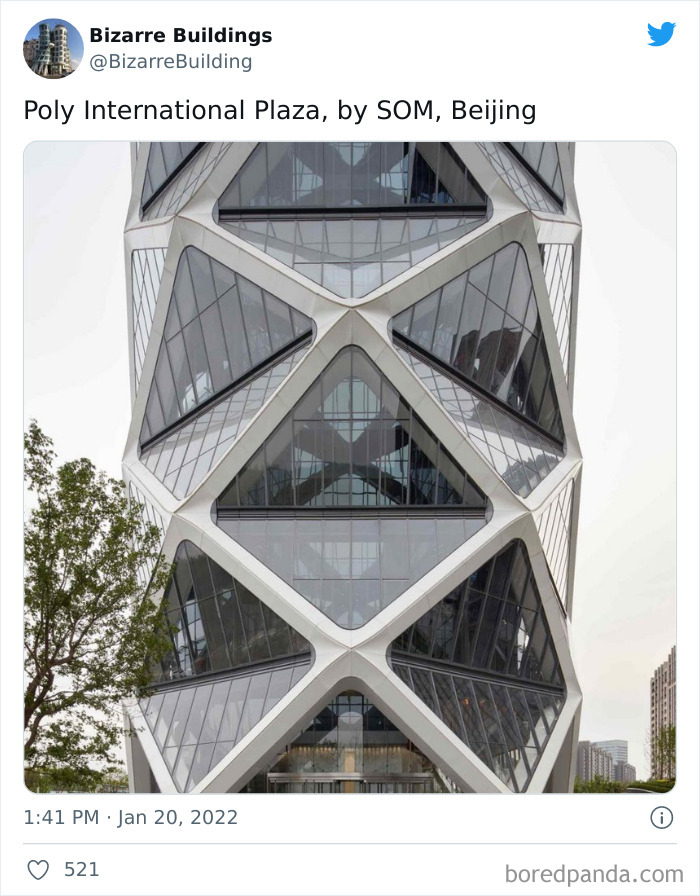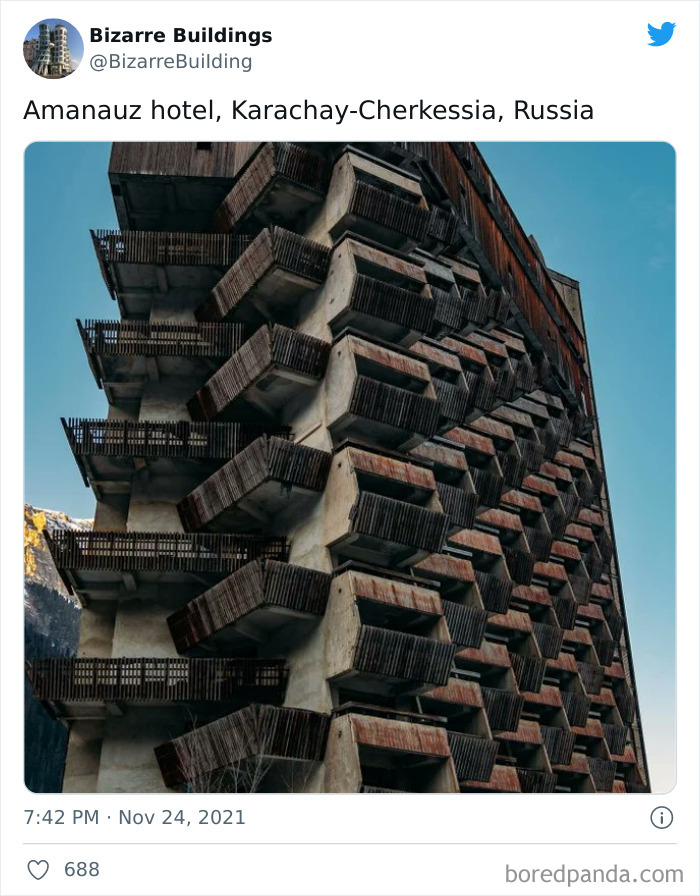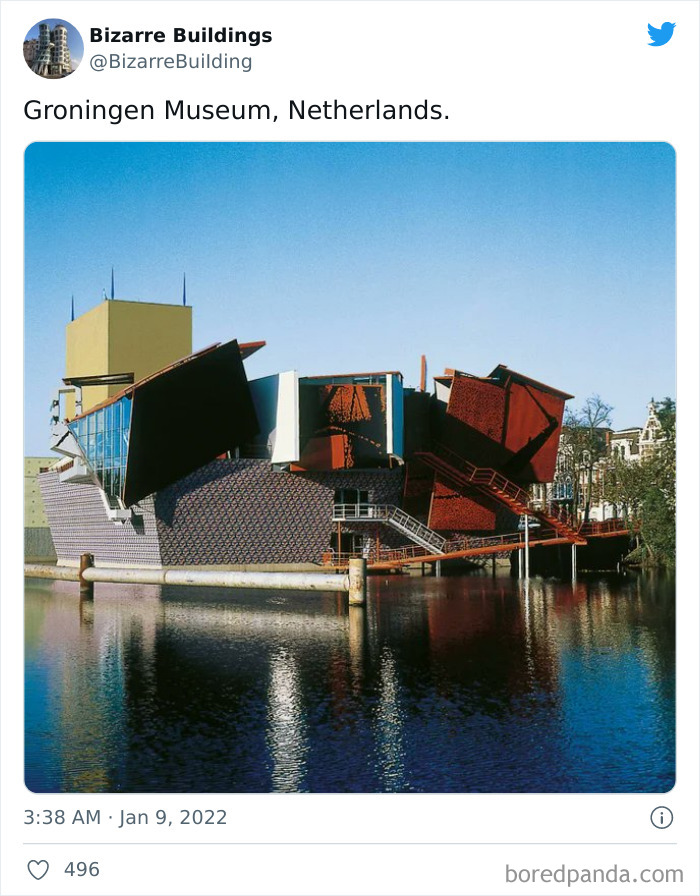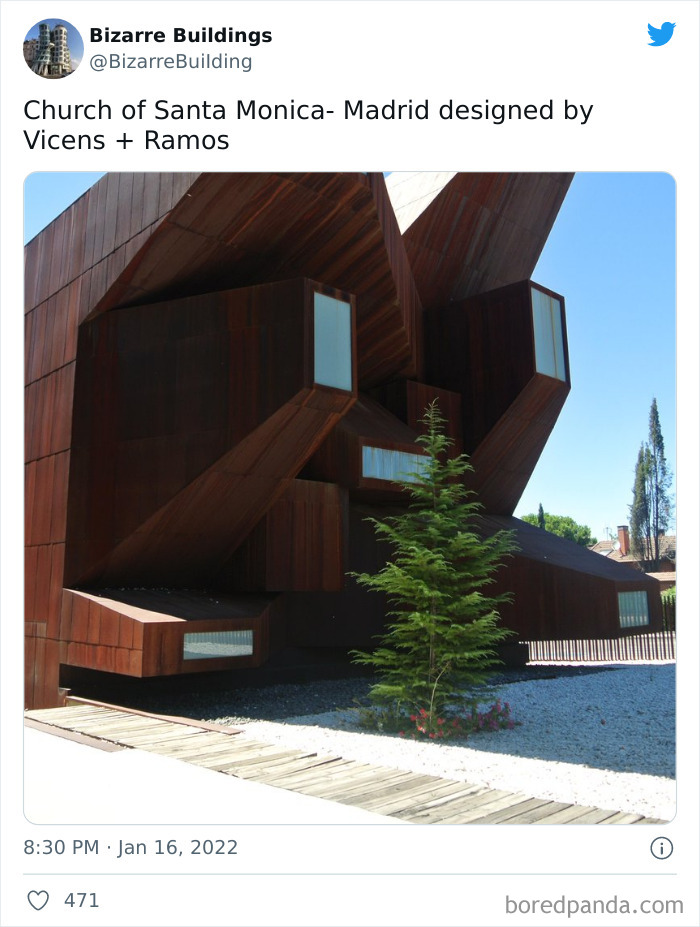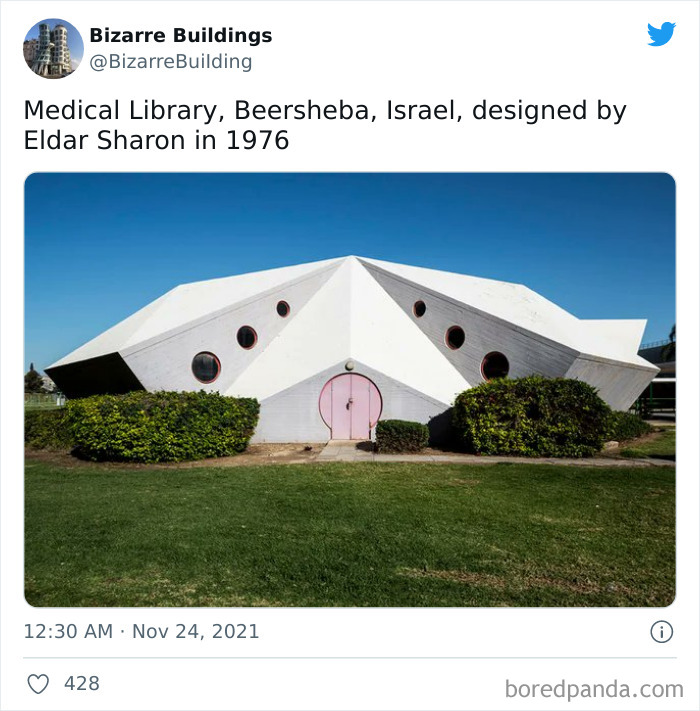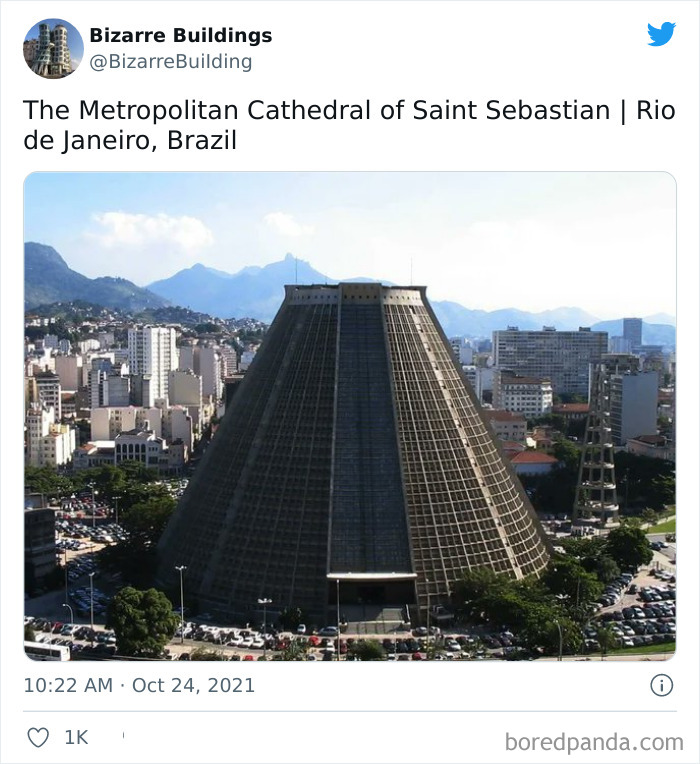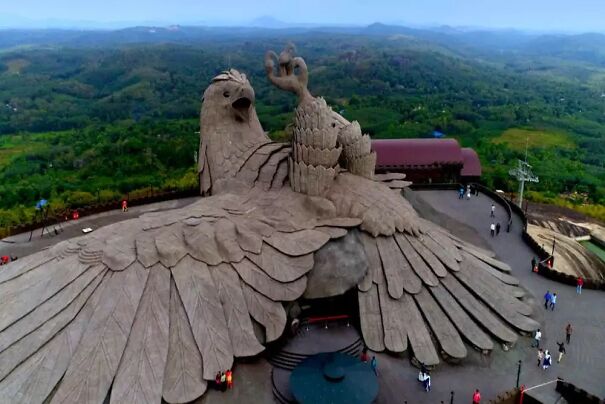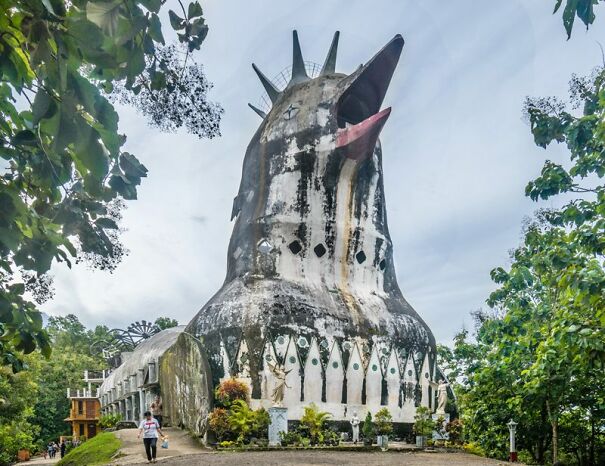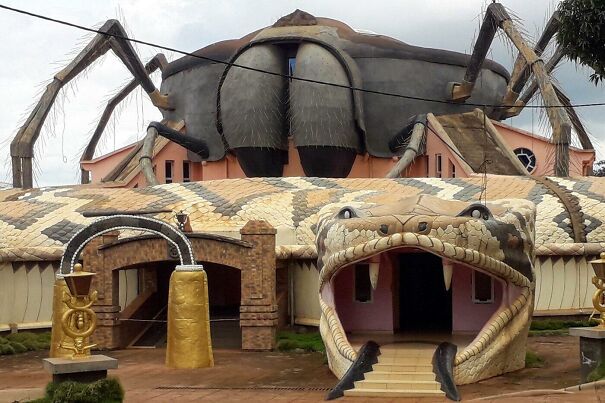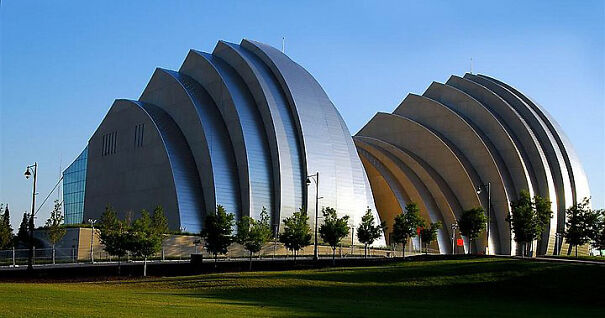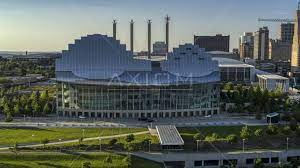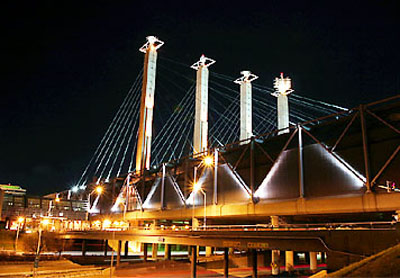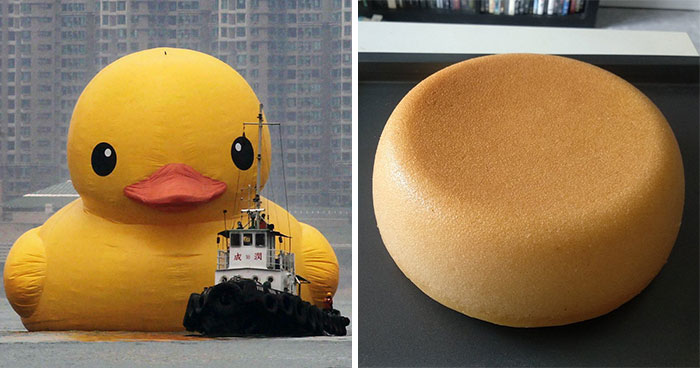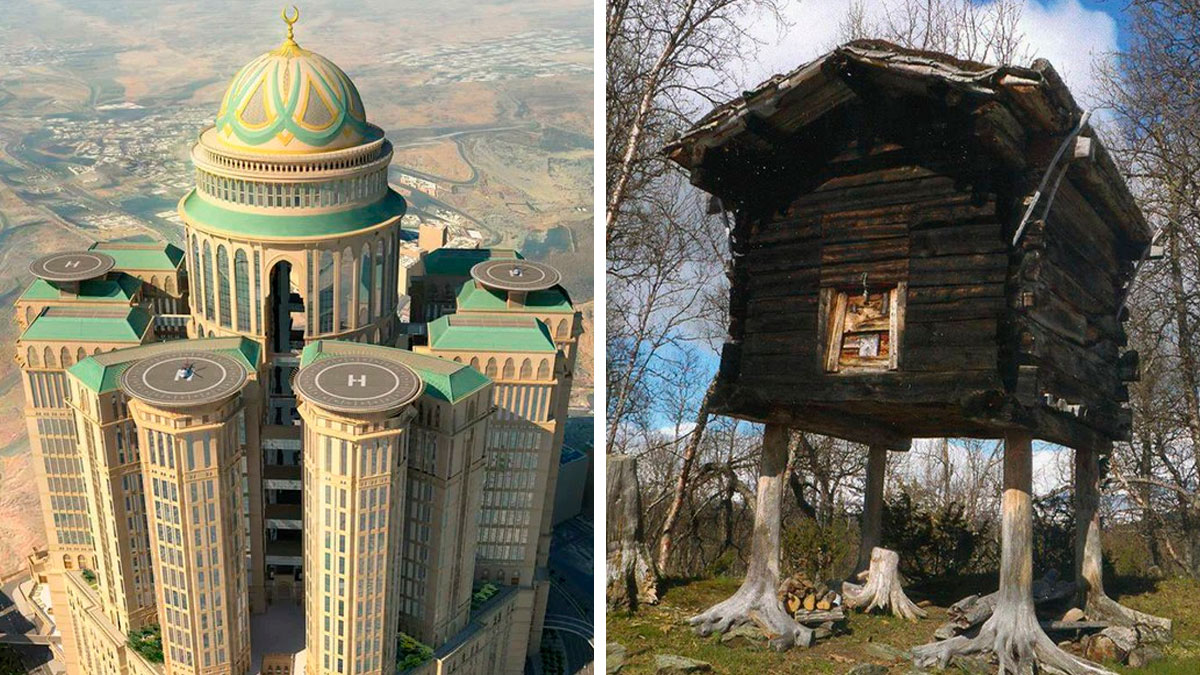
40 Times Architects Made Buildings That Look Unique And Cool But Were Uncomfortable To Live In Or Use
While we see the growing focus on sustainability and climate resilience in architecture, with many cities around the world searching for greener and healthier dwelling alternatives, we also see the opposite.
Out of a reckless bravado, a wish to impress no matter what, a client dictating the rules even if they make little sense, developers going off the leash, a world lacking taste, name your own reason, absurd architecture is not going anywhere. And the more we dive into the part of the internet ruled by architecture aficionados, the more of a treasure box for crazy buildings it turns out to be.
This Twitter page that goes by a laconic title “Bizarre Buildings” is no exception. It’s basically a collection of what it sounds like, weird-looking structures that make you question everything you know about function, common sense and aesthetics. Not to say it’s not fun, we all have a kind of fascination with such buildings!
This post may include affiliate links.
To find out more about our fascination with bizarre buildings and structures, we reached out to Lisa Yaszek, a Regents Professor of Science Fiction Studies at Georgia Tech where she researches and teaches science fiction as a global language crossing centuries, continents, and cultures. Lisa was happy to share some very interesting insights into the cultural significance of such buildings, and why they never cease to capture our imagination.
These are the kinds of buildings we need to protect the environment!!!
“We’re fascinated by strange-looking human-made structures because they remind us that, as humans, we don’t just create buildings to shelter ourselves from bad weather and dangerous animals. Rather, our buildings are also always expressions of our cultural values. When a building looks bizarre to us, it’s because it somehow challenges or defies those values,” Lisa explained.
The Hallgrímskirkja, named after the Icelandic poet and cleric Hallgrímur Pétursson (1614–1674)...State Architect Guðjón Samúelsson's design of the church was commissioned in 1937. He is said to have designed it to resemble the trap rocks, mountains and glaciers of Iceland's landscape....
for those who aren't familiar with icelandic, the d-thing with a strike through it is a "Th". kirkja means church (compare scottish 'kirk').
Load More Replies...Architect to client: What do you want your church to look like? Client to architect: The wrath of God.
Almost everything in Iceland is built with concrete and/or stone as that's about the only thing they don't have to import!
Brutalism at its finest. I mean, it truly is gorgeous, but also imposing and dark
hmm I dunno, I'm an atheist and I love old cathedrals, the dedication (or is that indentured labour) that went into them is incredible.
Load More Replies...I wish I knew of this one when I did my design project on the development of churches in high school- I love it and it fits into the landscape so well!
That is a starkly stunning building, beautifully suited to its location. Love it!
I agree it looks like an upended glacier. It is reaching through any kind of weather toward the heavens. I'd love to see the inside.
So far none of these buildings really match the description of uncomfortable to use
Almost always shown in lists of stunningly beautiful church architecture. I hate it.
Novel idea, instead of putting the organ in the church you put the church in the organ.
I think it's wonderful that our religious leaders have such gigantic, expensive and opulent buildings from which to tell us that the meek shall inherit the earth. Remarkable.
Maybe read about the architecture behind it. I agree that american religious organizations build eyesores, but this here is pure art commissioned by a government.
Load More Replies...The professor of science fiction studies argues that for the past two hundred years, many of us across the world have lived in cultures informed by the rhythms of industrial and mass production. It turns out that there are two specific values associated with these patterns of production that clearly inform most of the structures built in that time, Lisa said.
“First, industrial-era buildings tend to be uniform, clean-edged, and box-like in terms of their basic structures, ready for mass production; they may have elaborate and asymmetric details, like Victorian-era gingerbread, but those details are simply placed on top of the uniform, box-like structure as nonfunctional decoration.”
She continued: “second, industrial-era buildings tend to be designed with the assumption that infrastructure is more important than and in fact directly opposed to nature: we change the natural world to accommodate our uniform, box-like structures rather than designing unique structures to fit the particulars of different landscapes, and we create buildings that are meant to keep out elements, plants, and animals rather than accommodate them.”
Lisa explained that when a building looks bizarre to us as modern people, it’s often because it challenges the primacy of those industrial-era values that are so much part of our daily lives that we rarely even think about them.
Interestingly, according to Lisa, for most part we’re not threatened by bizarre buildings; “instead, they inspire our curiosity and wonder: who made these buildings and why? What purpose did or do they serve? What are the people like who used or still use these buildings, and how do these buildings help them live long and prosper? When we look at responses to the images posted the Bizarre Buildings Twitter feed—and in this article!—we can see that these strange structures inspired people from around the world to pool their different cultural knowledges and experiences to answer such questions.”
Lisa also said that “as someone who has lived my whole life in the United States, it’s exciting to learn, for instance, that the walking house from the Baba Yaga myth was probably inspired by the storehuts on stilts that people build across Northern Europe, and to see fully painted religious temples in contemporary India that give us a better sense of what ancient Greek temples really looked like!”
The professor argues that when we learn the stories behind these unusual structures, we are reminded that people have always built for diverse but often geographically and culturally specific needs that were, to them, just as important as our own are to us.
“It’s also fun to see how contemporary artists and architects around the world play with the idea of the industrially inspired uniform box building—by painting it so it looks asymmetric even if it is really square or manipulating hard brick to look like soft fabric; by multiplying boxes and joining them at surprising angles; by adding smaller 'parasitic' boxes to larger ones, and so on.”
“Meanwhile, other contemporary designers show how infrastructure can accommodate and respond to the natural world rather than eliminating or changing it, as with buildings that have trees growing inside and houses that are open to the elements. If old bizarre buildings remind us that the people made structures in the past to meet needs and express values different from ours, new ones show us how people continue to create buildings that express a range of values and ideals today as well,” Lisa explained.
Drawer/ Hotel California. You can check in but never leave (the arrow only points inwards).
The silo like building on the left looks remarkably similar to a certain billionaire's rocket
I have 8 acres in the woods my dad left me ! I wish I had money I would so have mushroom houses everywhere !
Reminds me of when I'm playing sims and I can't figure out how the back should look
Why are these considered "uncomfortable to live in"? Shouldn't we also see a picture of the inside of the building so we can determine that?
I mean, according to the link it's "This Twitter Page Celebrates Bizarre Buildings"
Load More Replies...Why? Just why? The title just hurts my head. Every one of these is functional, and I happen to know a few of them are actually standouts for function. If you want buildings that look weird and don't function, post some Gehry.
The title of the original posts on Twitter is "Bizarre buildings" and that's written in every picture. It seems BP wanted to change the original name and call it "uncomfortable" instead, although it's not even adequate
Load More Replies...Another pretty cool one is Casa Pueblo in Uruguay by artist Carlos Páez Vilaró. It's a hotel built into a seacliff and they do tours. The inside is alot of the natural rock; never been in the rooms but the hallways are like walking through a very nice cave. From the street you just see what appears to be a welcoming archway to a 2 floor building and then you walk through and there's 13 floors overlooking the ocean
The name change on this thread runes it. These are not uncomfortable to live in
Many of these look very comfortable and many are buildings don't live in
They forgot these: Eagle: https://www.boredpanda.com/largest-bird-statue-jadayupara-jatayu-earth-centre-india Chicken: https://www.atlasobscura.com/articles/who-built-the-chicken-church-indonesia Spider and snakes: https://www.fodors.com/world/africa-and-middle-east/experiences/news/you-might-not-have-ever-seen-this-unbelievable-building-heres-whats-inside
#4 is similar to the "horreos" of Asturias, in the north of Spain
most of these look amazing and comfortable - some even lux. The title needs to be fixed
How about this building: Port Authority building in Antwerp Belgium
I was hoping to see the Kaufmann Center for the Performing Arts in Kansas City, Missouri.
Why are these considered "uncomfortable to live in"? Shouldn't we also see a picture of the inside of the building so we can determine that?
I mean, according to the link it's "This Twitter Page Celebrates Bizarre Buildings"
Load More Replies...Why? Just why? The title just hurts my head. Every one of these is functional, and I happen to know a few of them are actually standouts for function. If you want buildings that look weird and don't function, post some Gehry.
The title of the original posts on Twitter is "Bizarre buildings" and that's written in every picture. It seems BP wanted to change the original name and call it "uncomfortable" instead, although it's not even adequate
Load More Replies...Another pretty cool one is Casa Pueblo in Uruguay by artist Carlos Páez Vilaró. It's a hotel built into a seacliff and they do tours. The inside is alot of the natural rock; never been in the rooms but the hallways are like walking through a very nice cave. From the street you just see what appears to be a welcoming archway to a 2 floor building and then you walk through and there's 13 floors overlooking the ocean
The name change on this thread runes it. These are not uncomfortable to live in
Many of these look very comfortable and many are buildings don't live in
They forgot these: Eagle: https://www.boredpanda.com/largest-bird-statue-jadayupara-jatayu-earth-centre-india Chicken: https://www.atlasobscura.com/articles/who-built-the-chicken-church-indonesia Spider and snakes: https://www.fodors.com/world/africa-and-middle-east/experiences/news/you-might-not-have-ever-seen-this-unbelievable-building-heres-whats-inside
#4 is similar to the "horreos" of Asturias, in the north of Spain
most of these look amazing and comfortable - some even lux. The title needs to be fixed
How about this building: Port Authority building in Antwerp Belgium
I was hoping to see the Kaufmann Center for the Performing Arts in Kansas City, Missouri.

 Dark Mode
Dark Mode 

 No fees, cancel anytime
No fees, cancel anytime 


